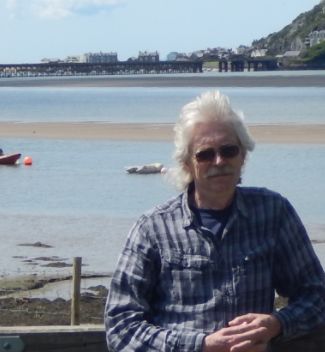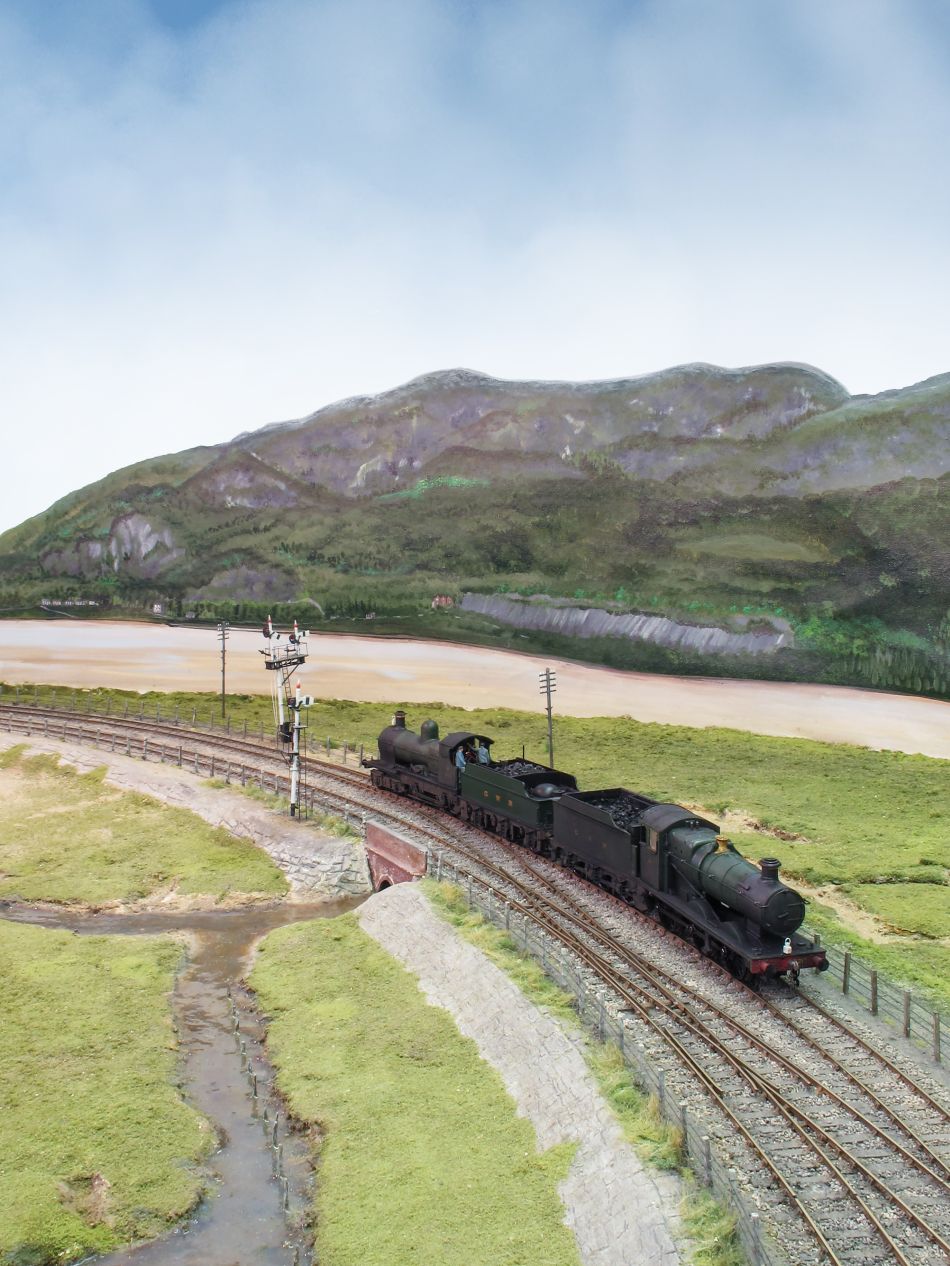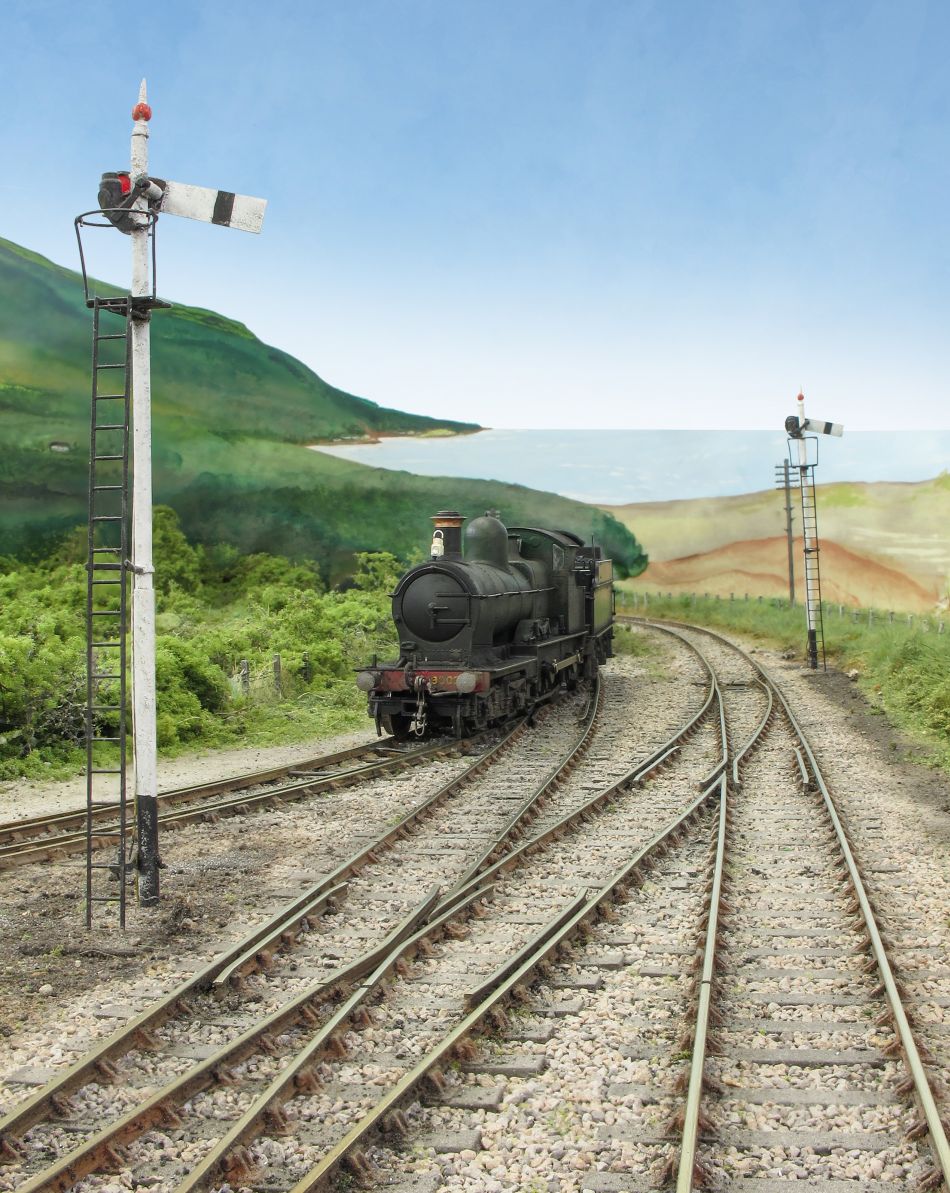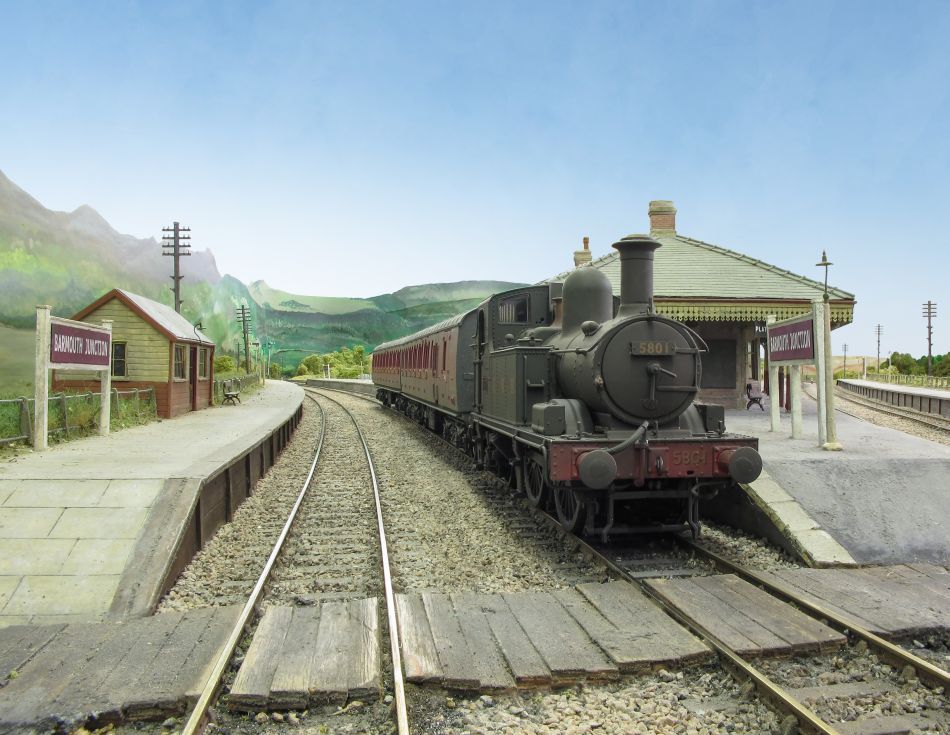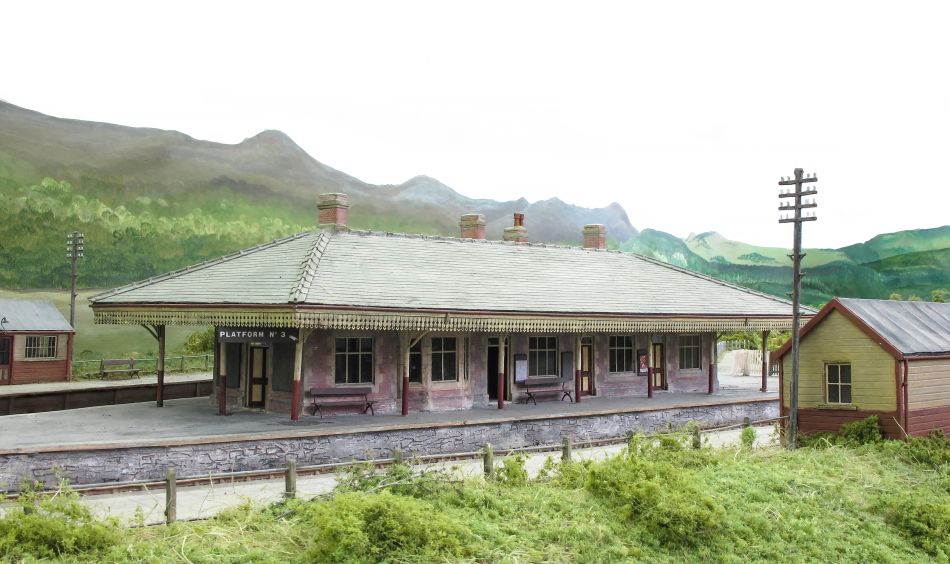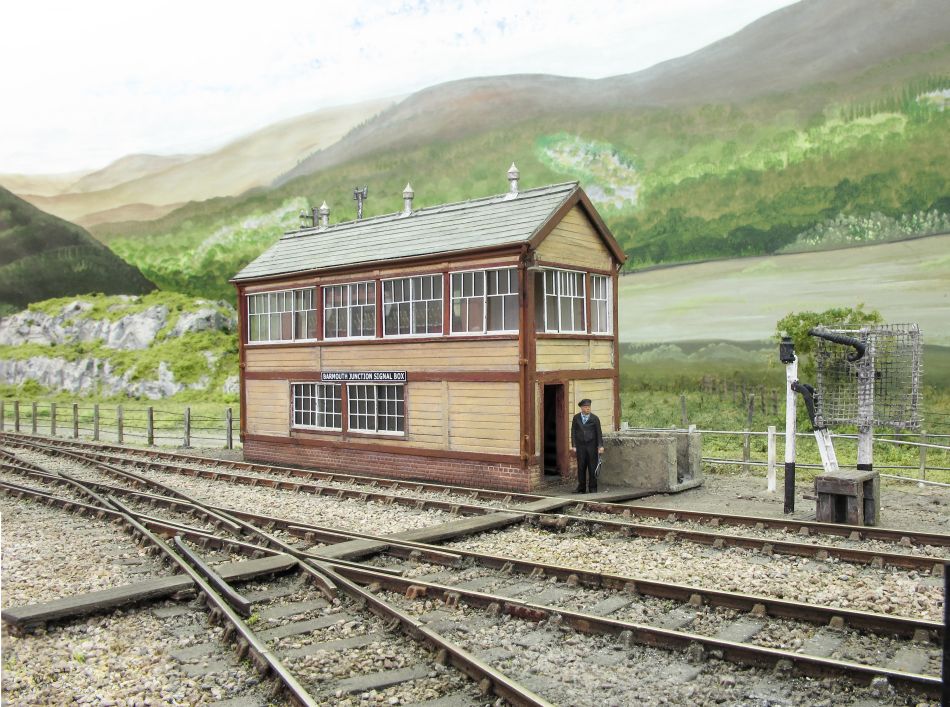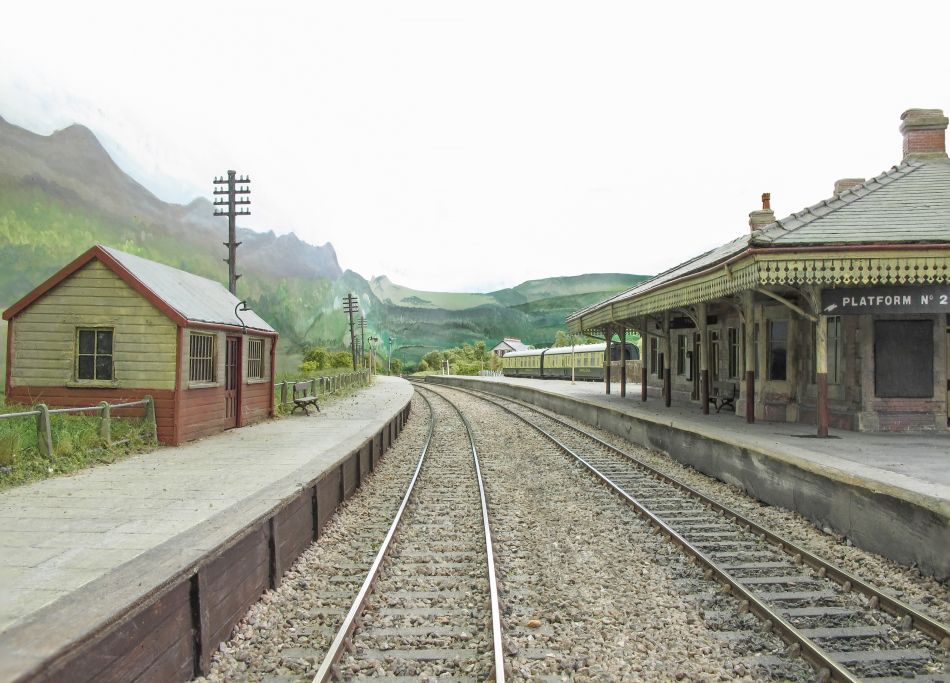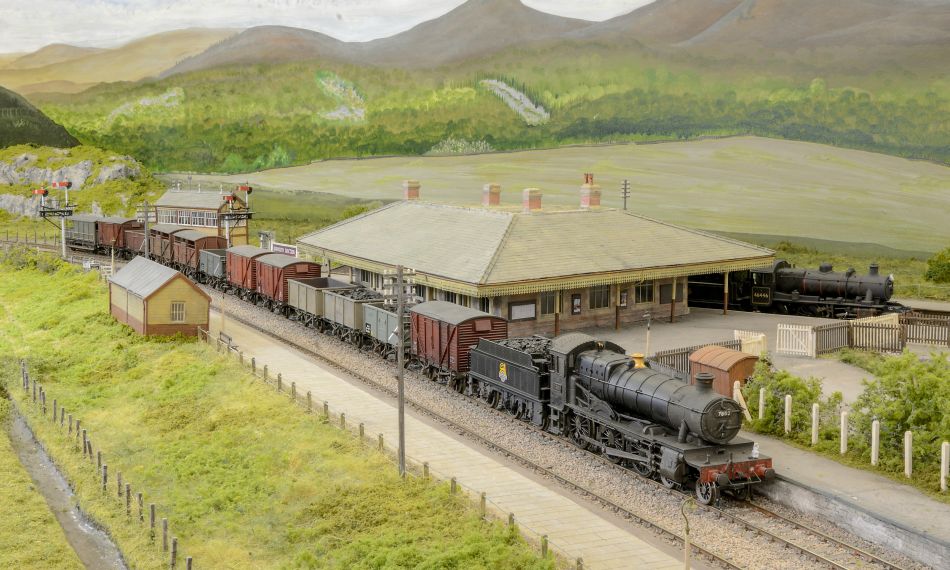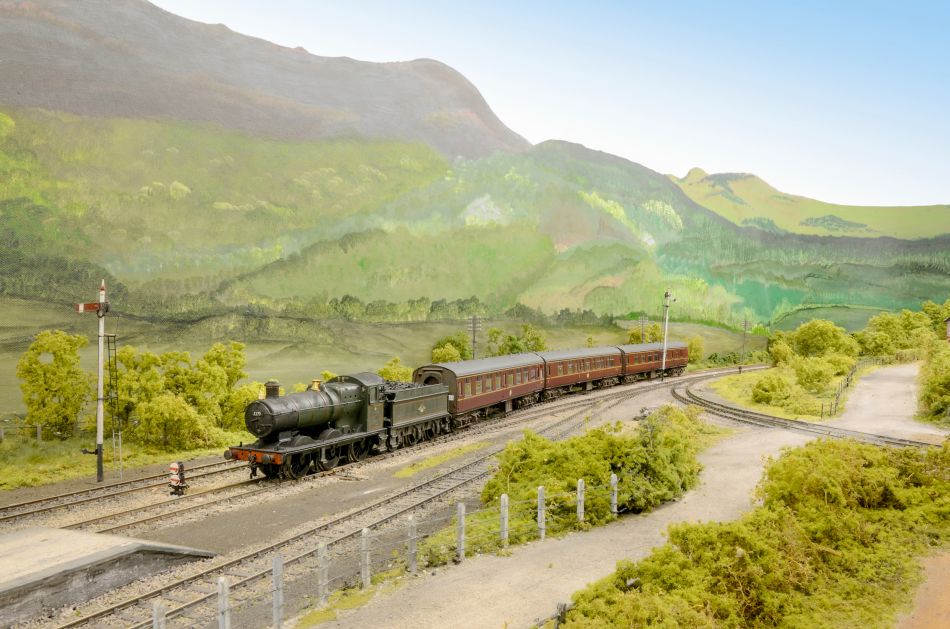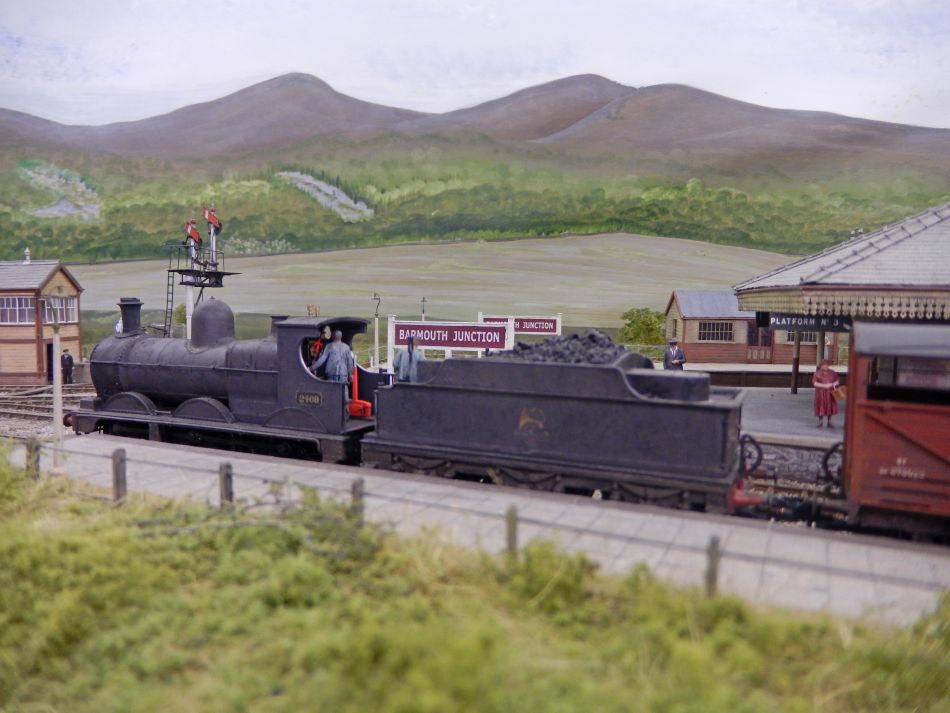| Section Page | Previous Page | Next Page |
|
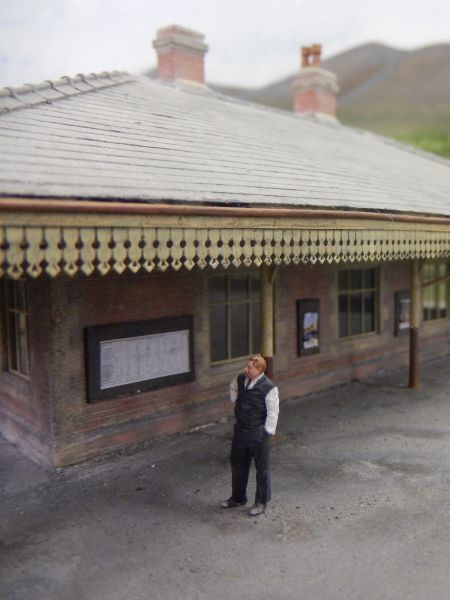
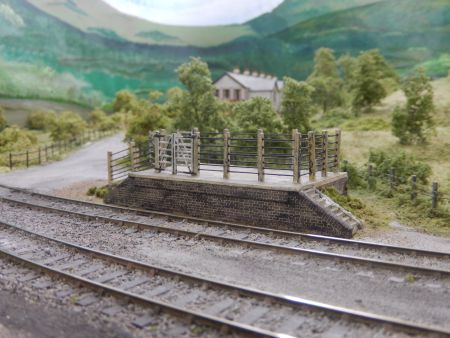 |
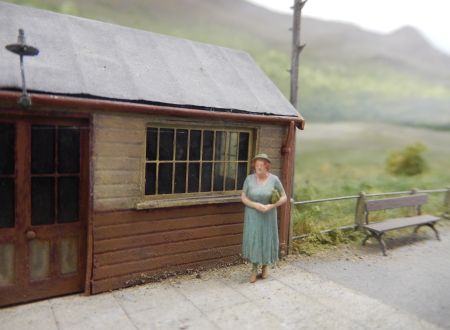
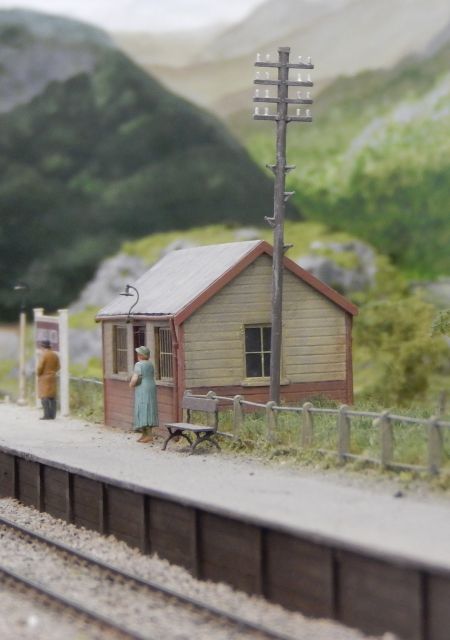 |
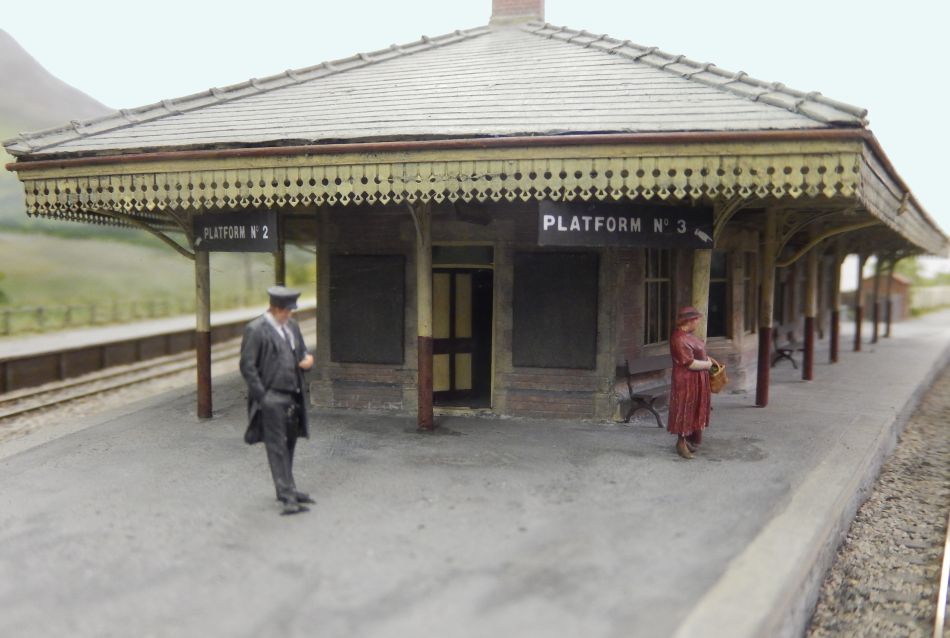
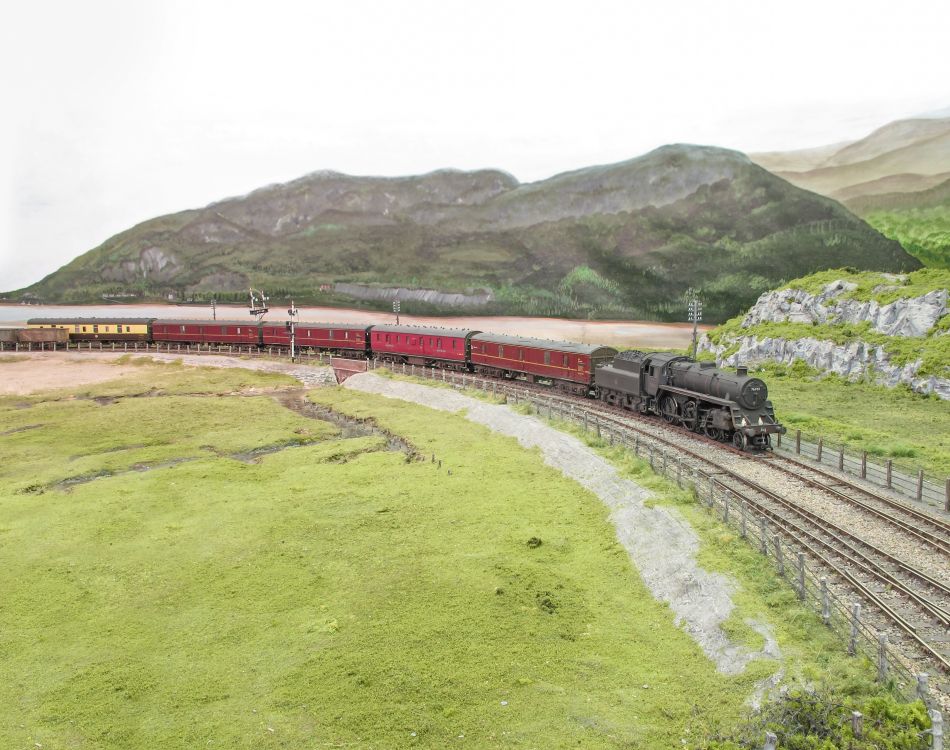
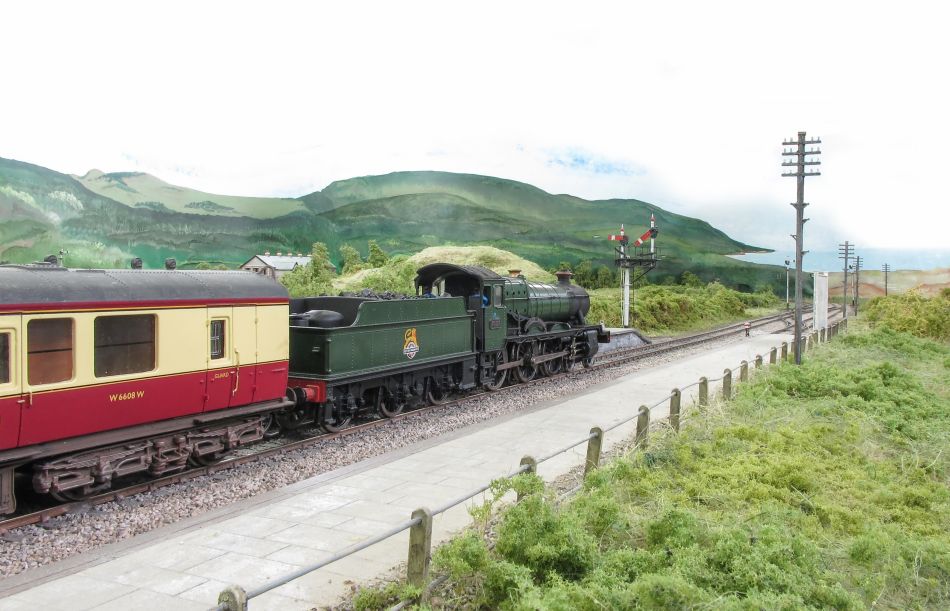
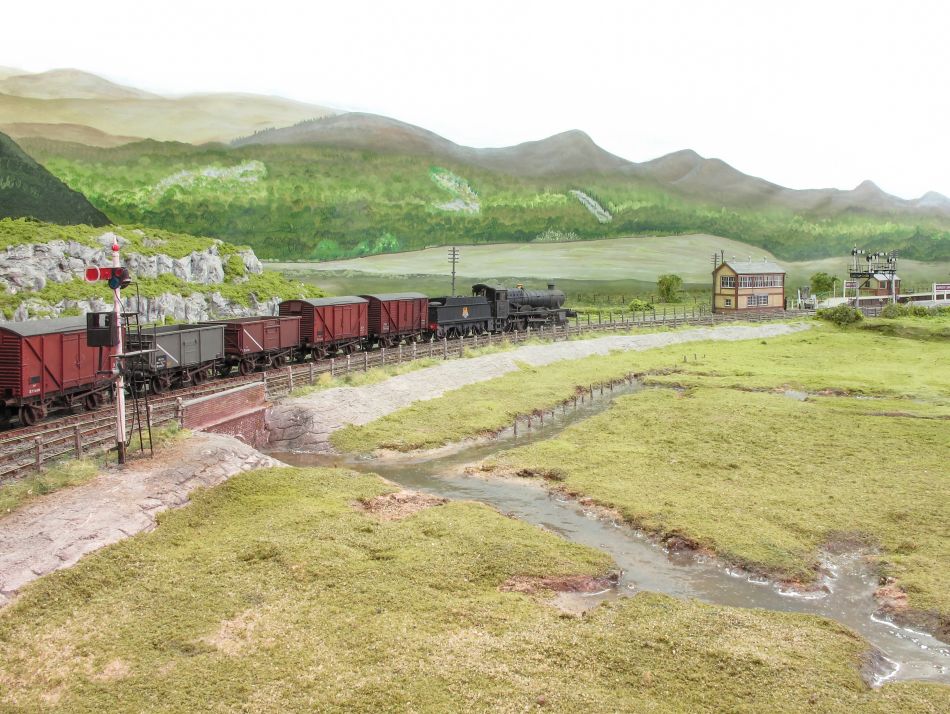
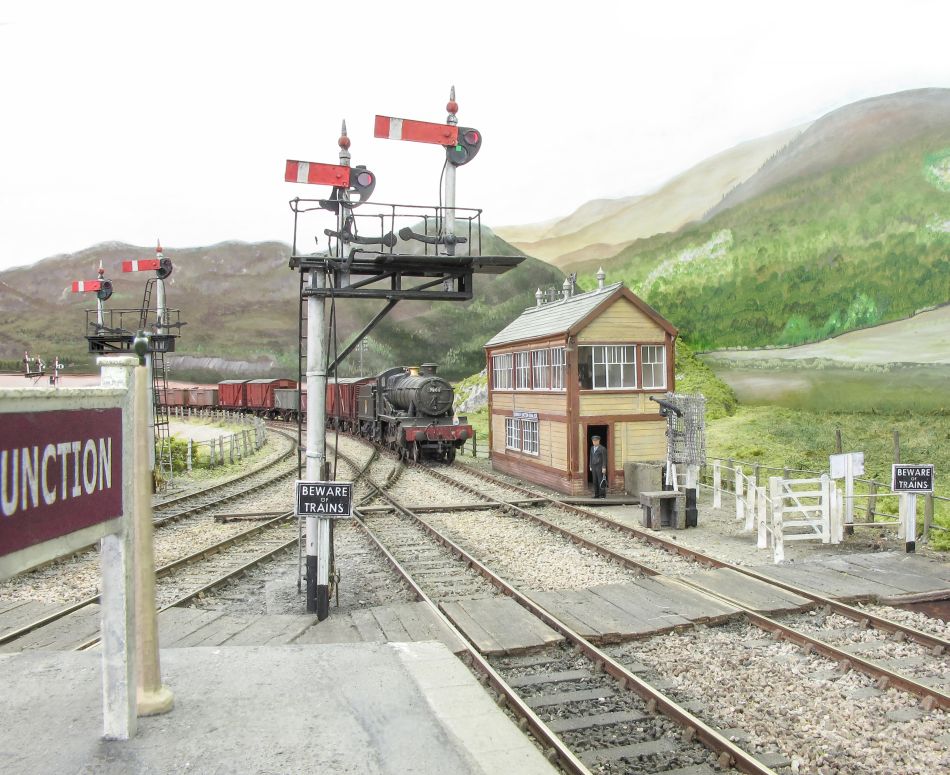
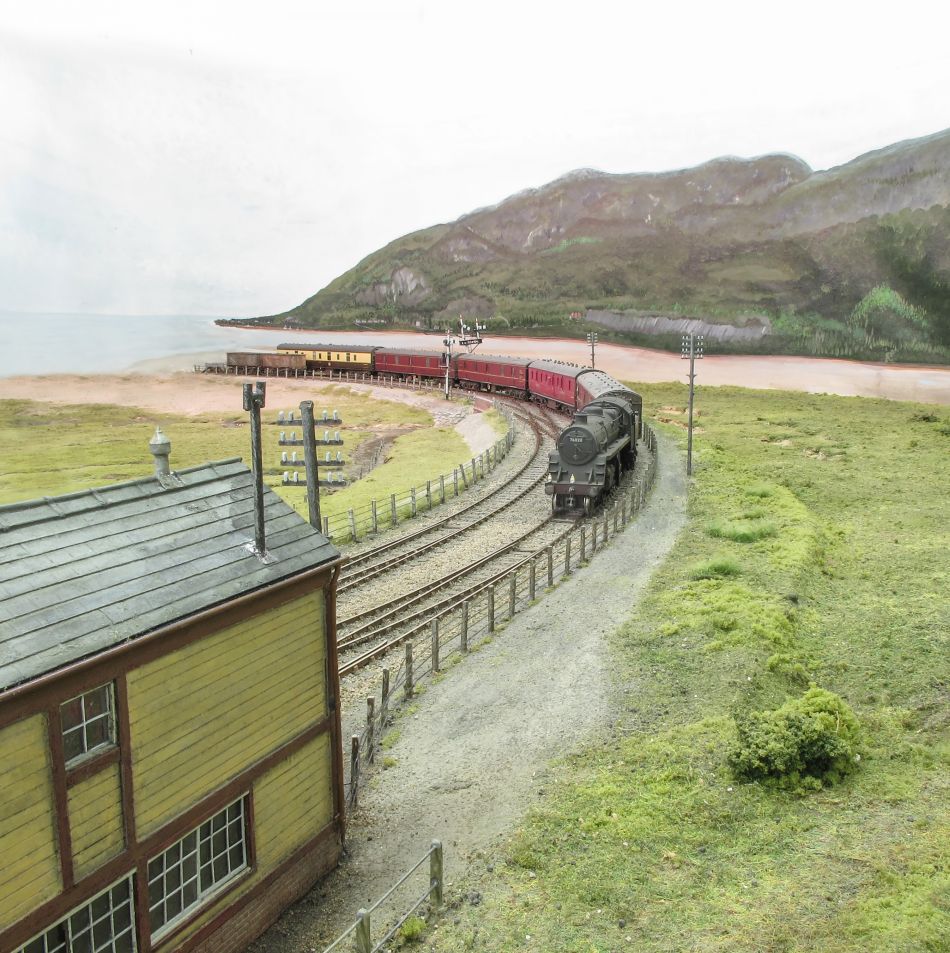
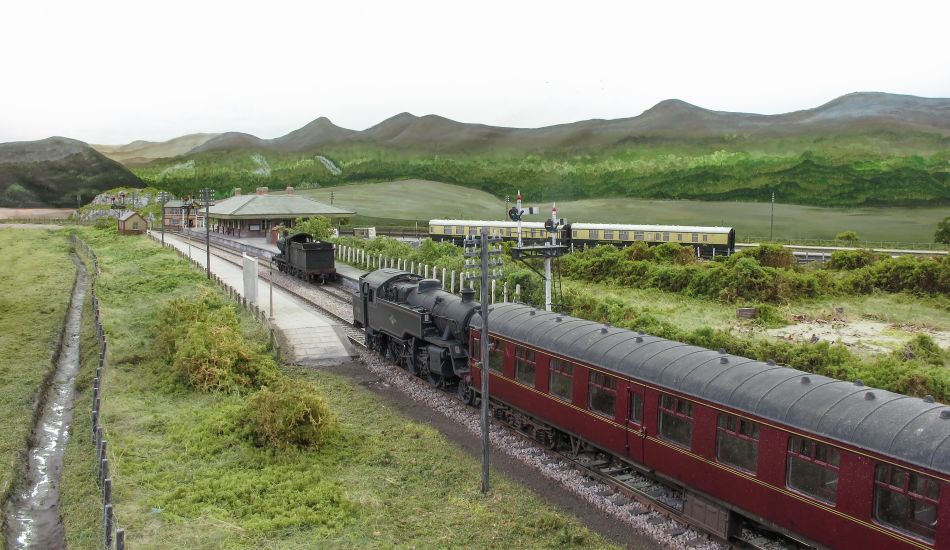
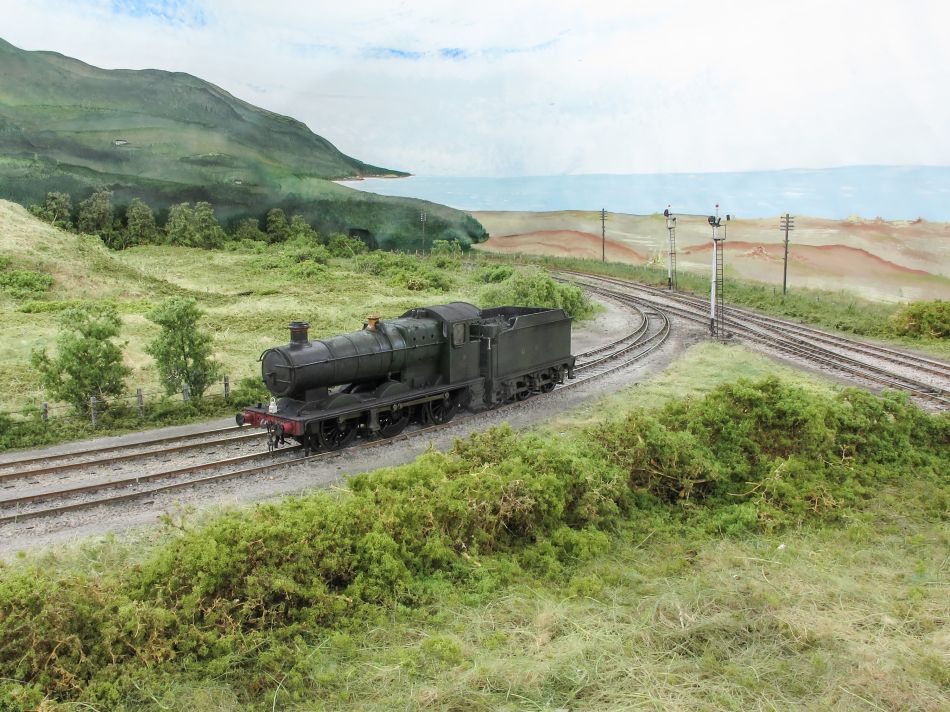
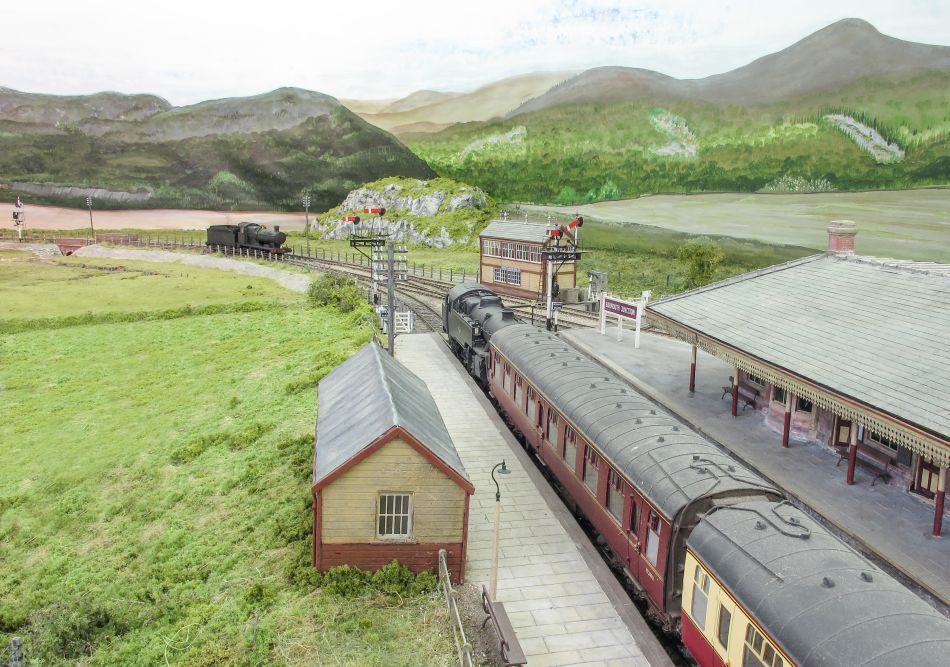
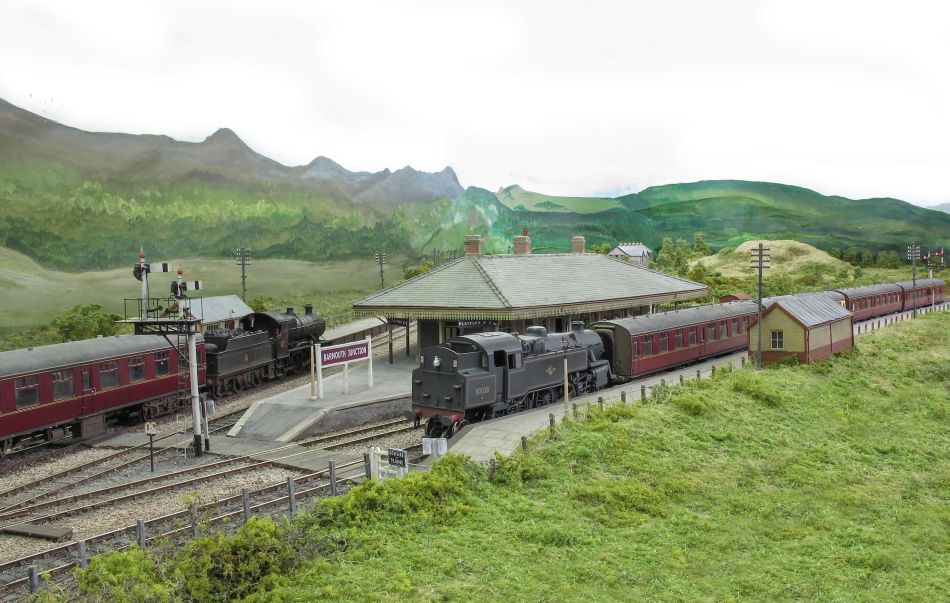
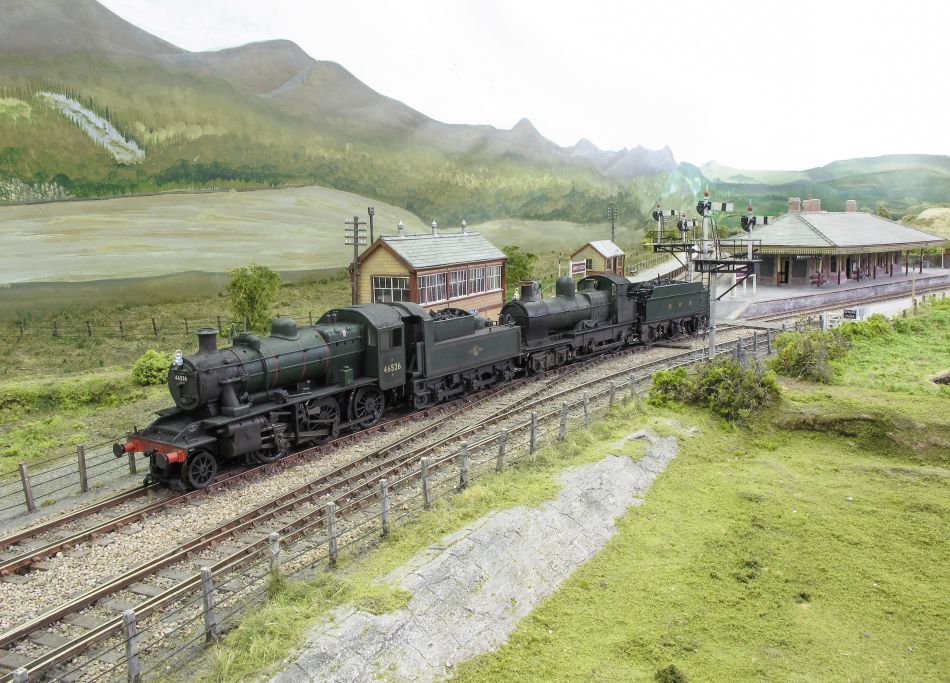
Light locos turning on the loop at the junction were a common feature in steam days and one that I've replicated in the sequence. The above pic shows two locos, an Ivatt and a Dukedog, running backwards to turn.

Penmaenpool
Penmaenpool station is closely based on the real station that closed in 1964 and everything is in the right place. The platforms are a little bit shorter than the real ones, due to the usual lack of space most of us have for our model railways. However, it functions exactly as the real one would have done and it is probably the most scenic of all the layout sections with its buildings, river and steep sided mountainside behind.
The trackwork is all hand-built with individual chairs and sleepers. The pointwork was constructed by my late friend John Bailey and he suggested that I make the plain track in the same way, which would mean that I had to construct all the plain track with the individual chairs as well. I hadn't done anything like this before, so it was a challenge. First of all, the design of the track was drawn out on Templot software and then printed off full size. This plan was glued to the baseboard and then the sleepers were cut and glued on to the plan. One rail was attached to the sleepers and by using gauges, the other rail was then attached. It was a long and sometimes tedious job, especially when some of the chairs were put on the wrong way round! I soon learnt my lesson with that and double checked as I went along. I have to say that the track looks superb and I'm glad that it was done this way.
I have to say that I'm well pleased with the finished layout of Penmaenpool. It was the last part to be constructed, but the first to be finished. My laser machine came in very handy for the many parts of the platforms and the bridge with huts. By the way, that is a 4mm version of me on the George Hotel balcony.
Penmaenpool was featured in the July and August 2016 issues of British Railway Magazine.
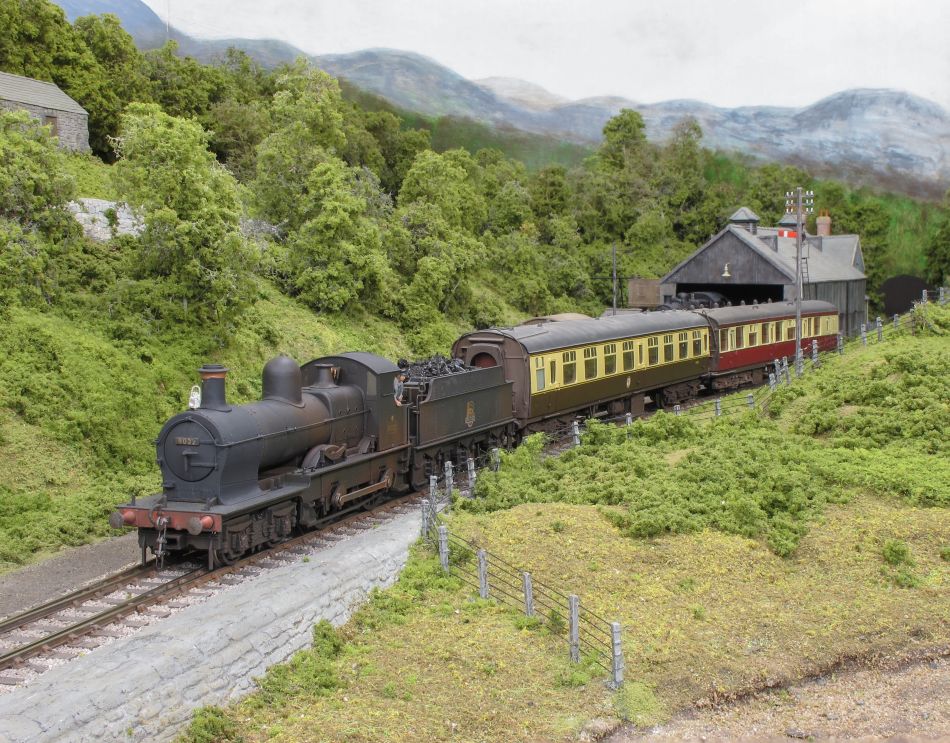
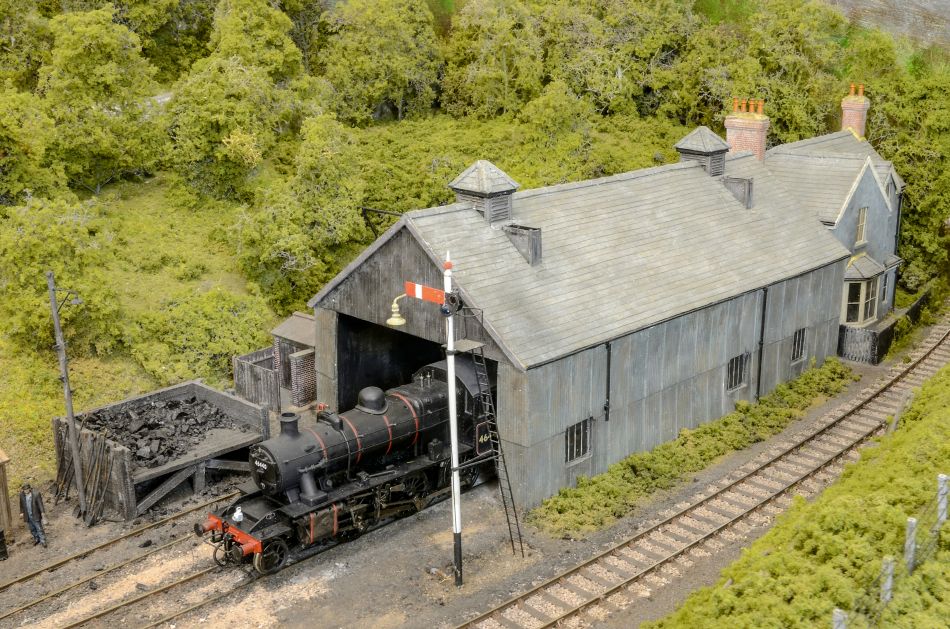
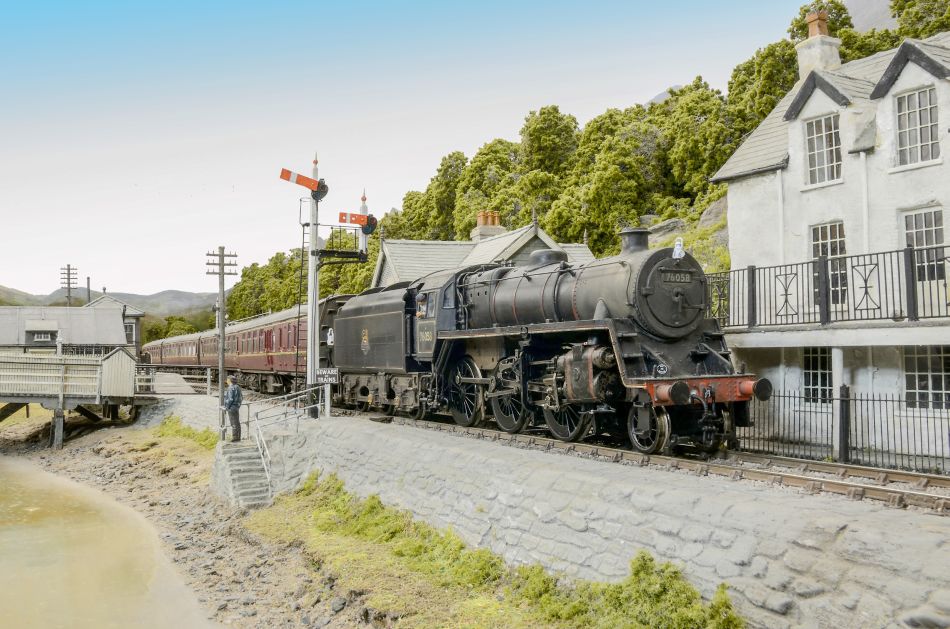
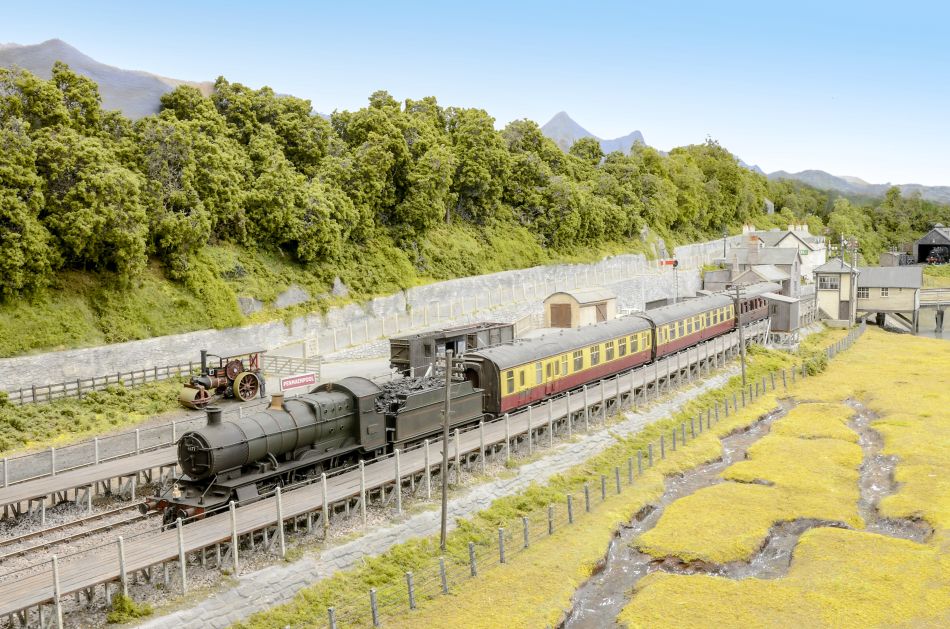
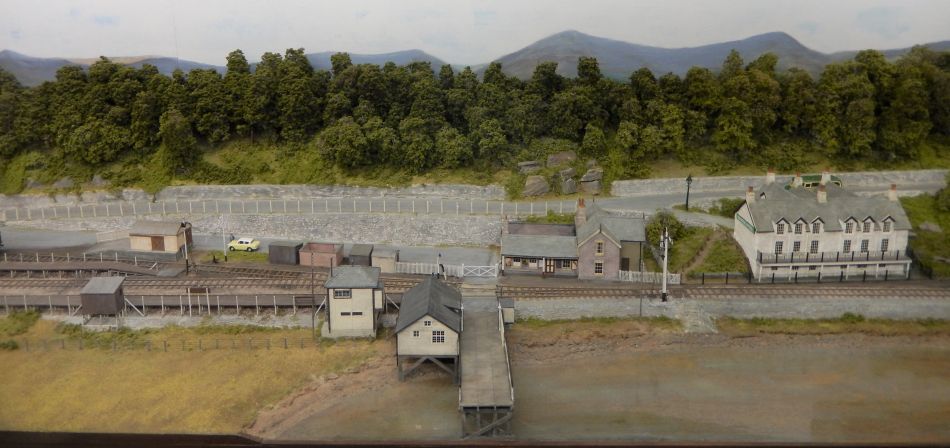
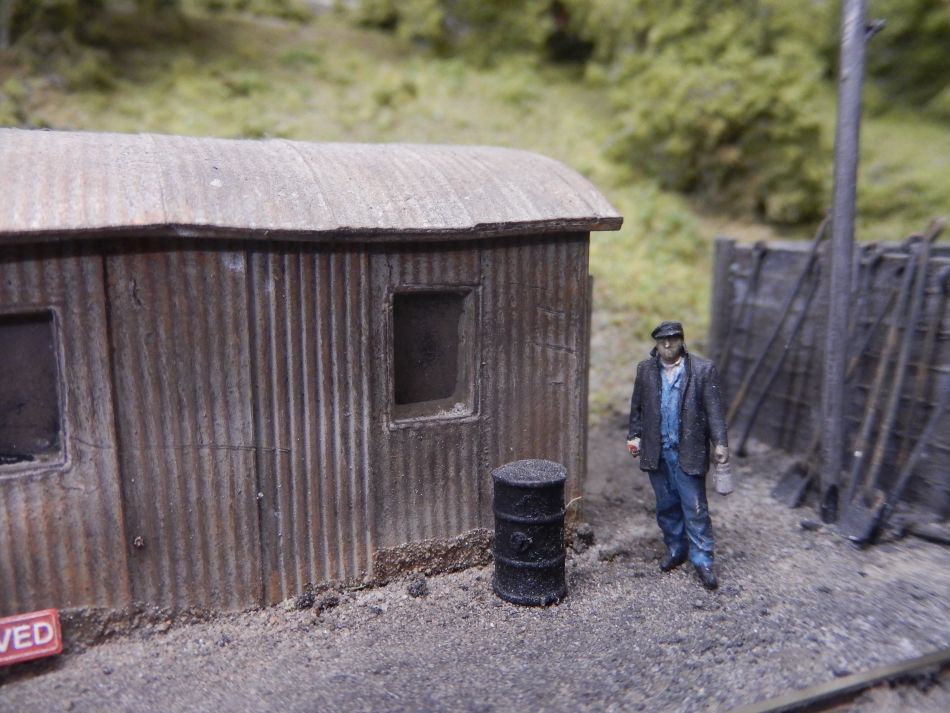

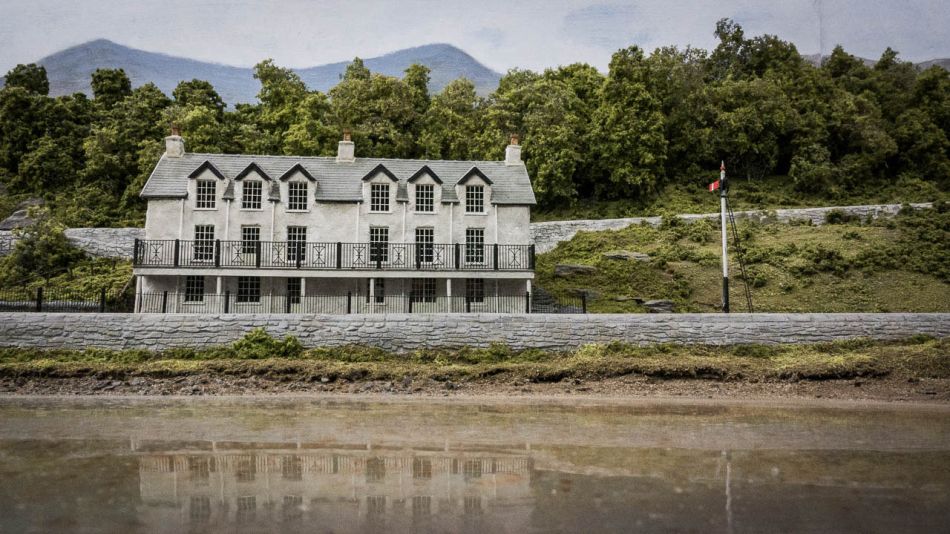
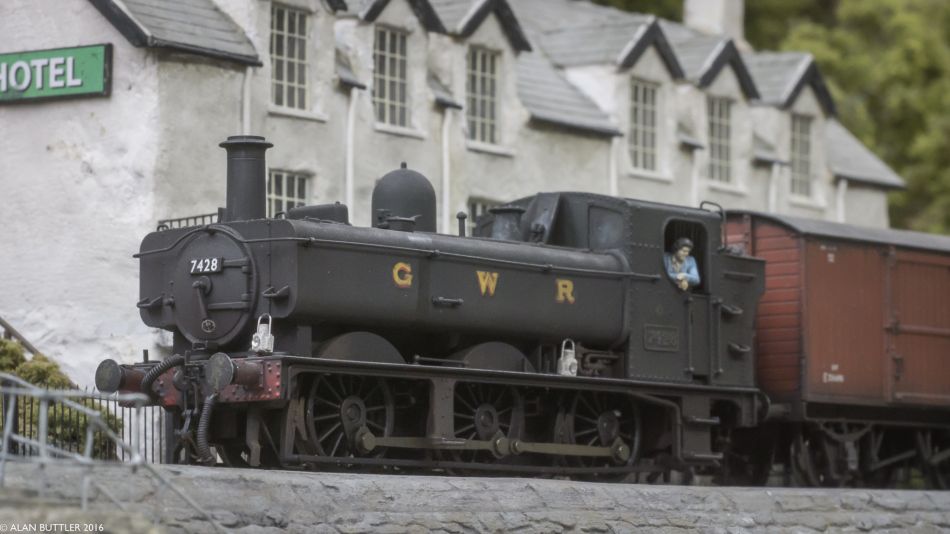
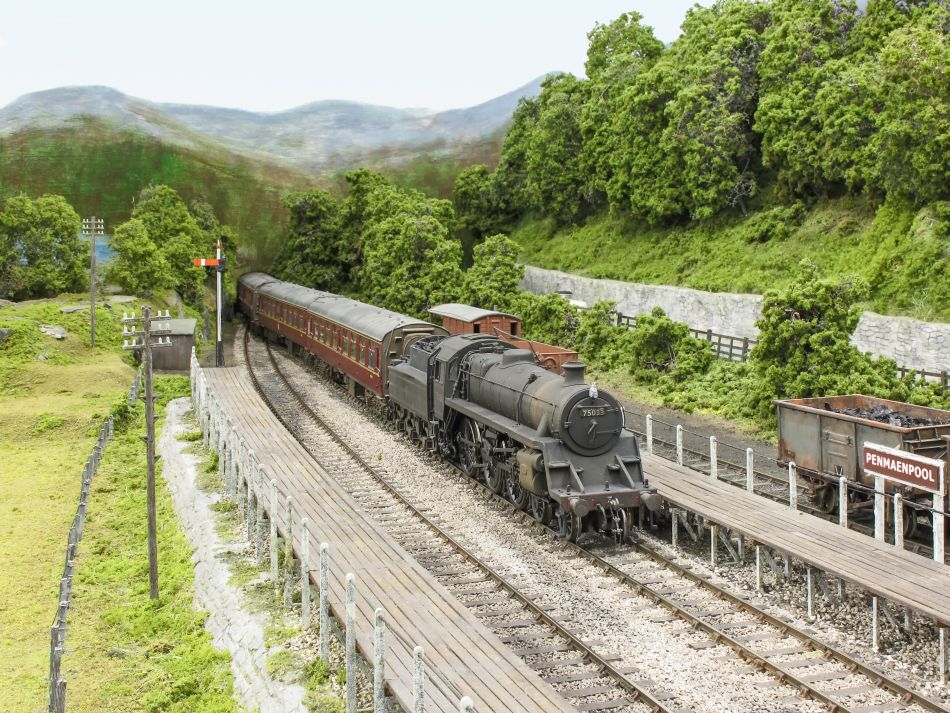
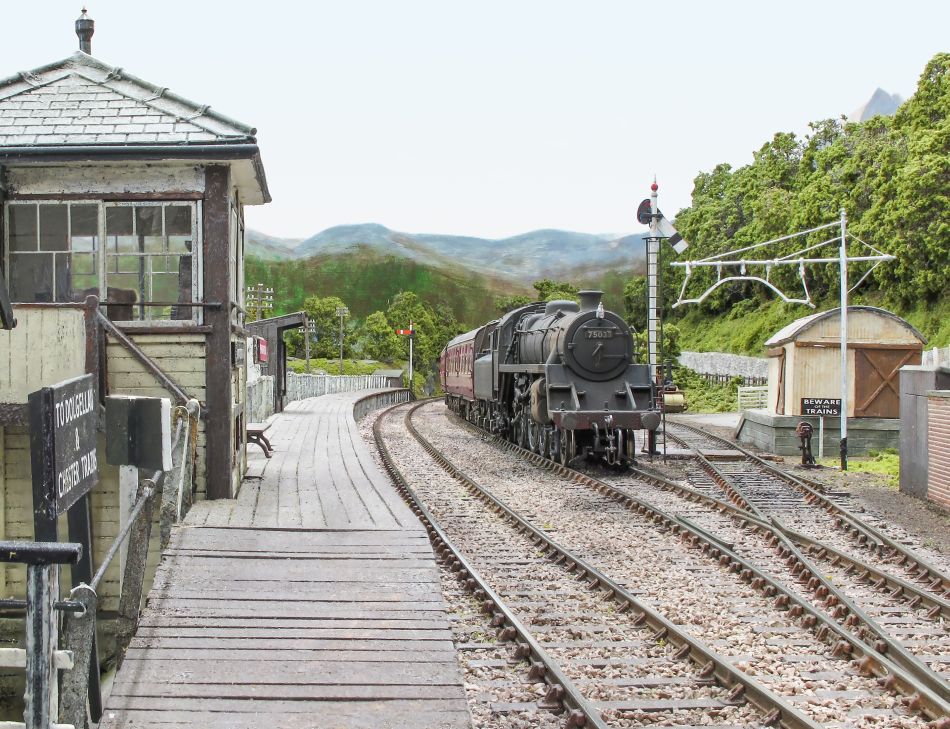
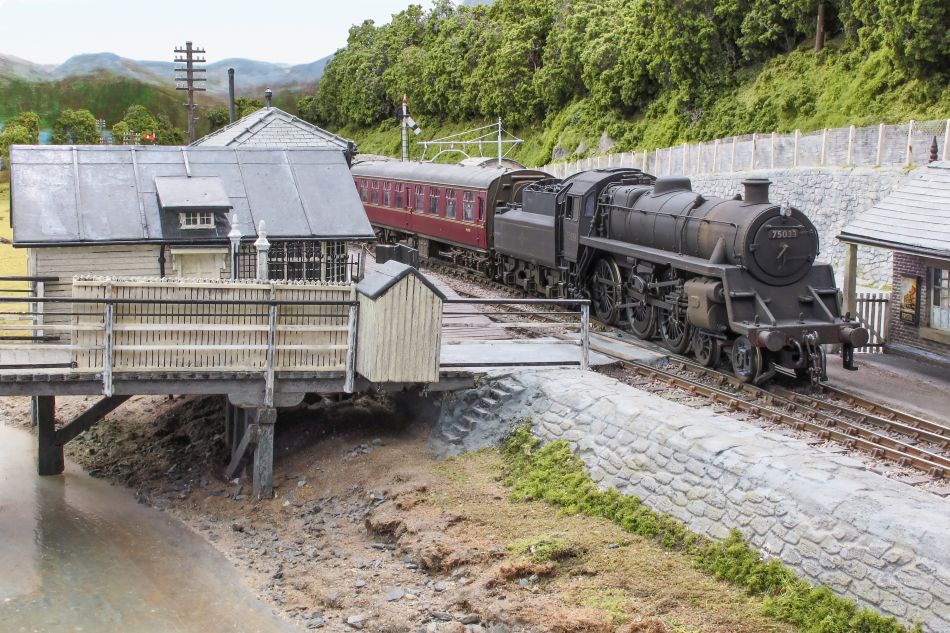
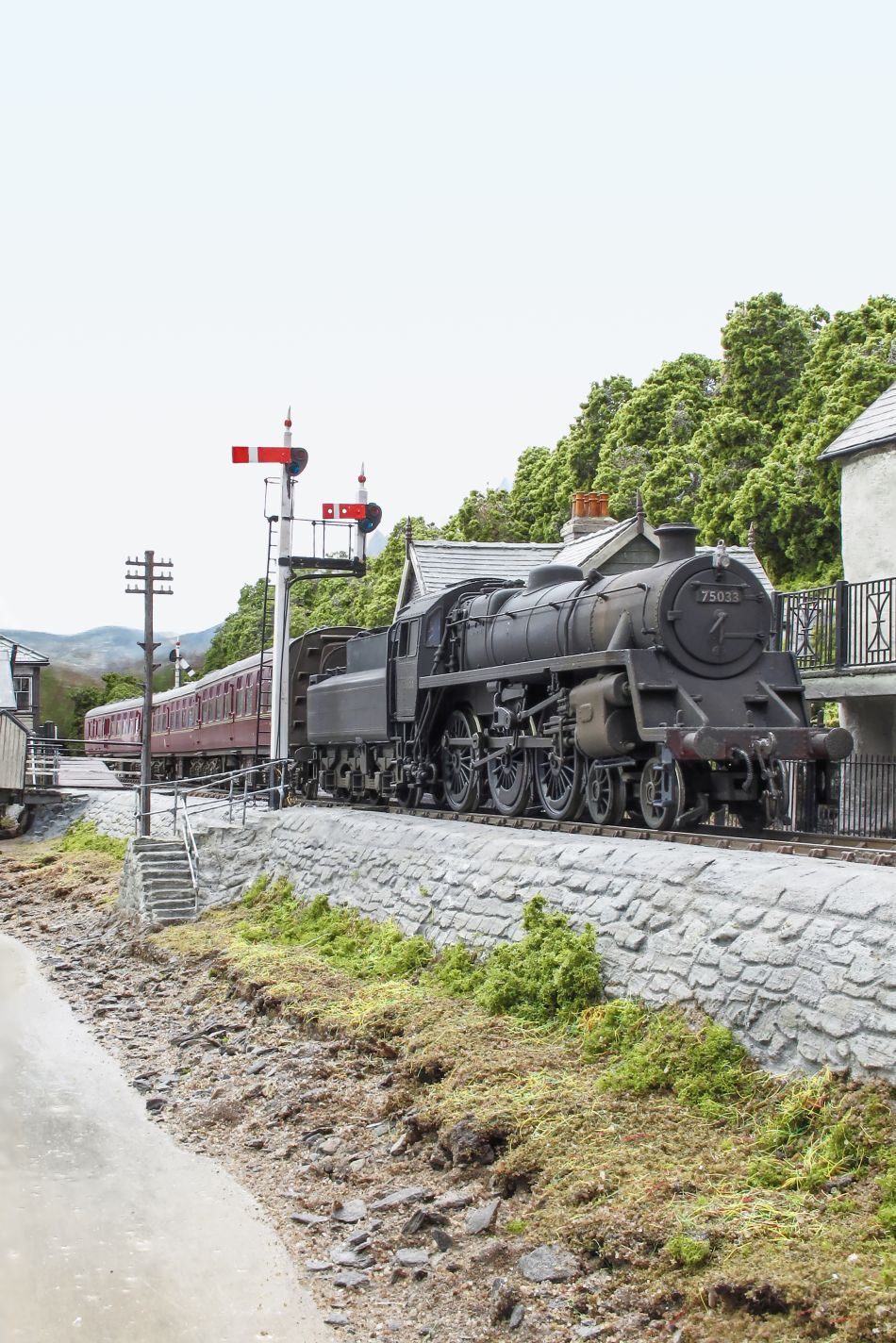
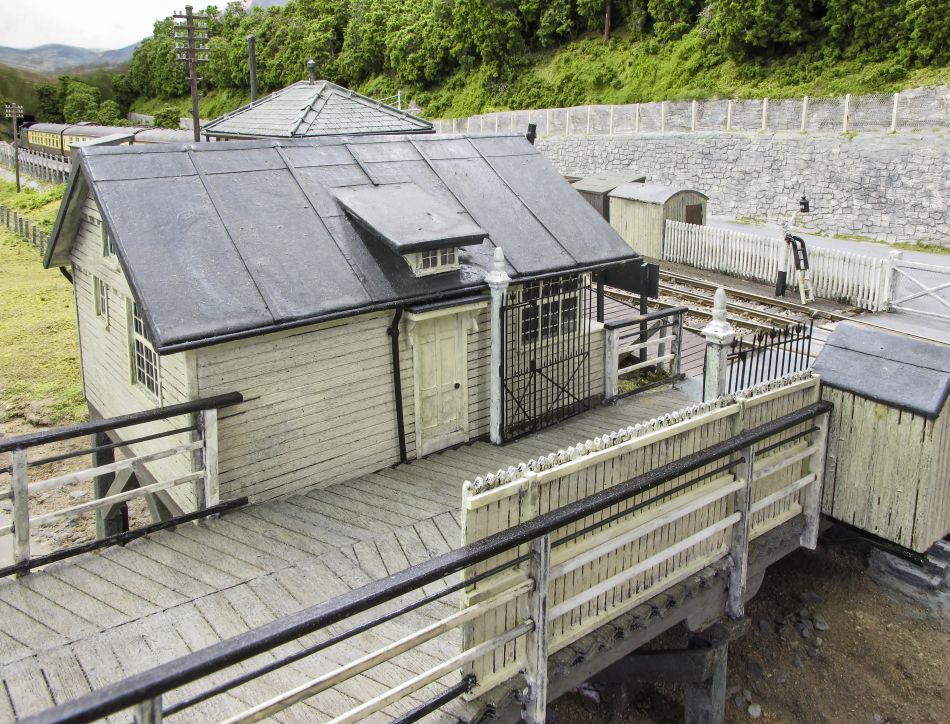
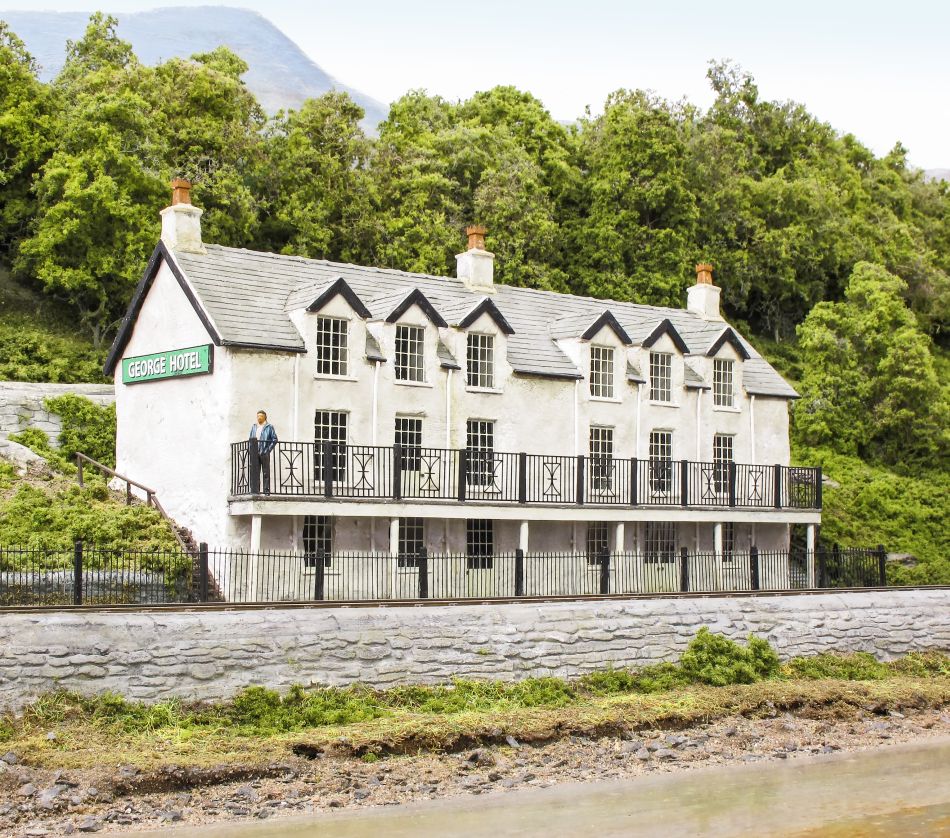
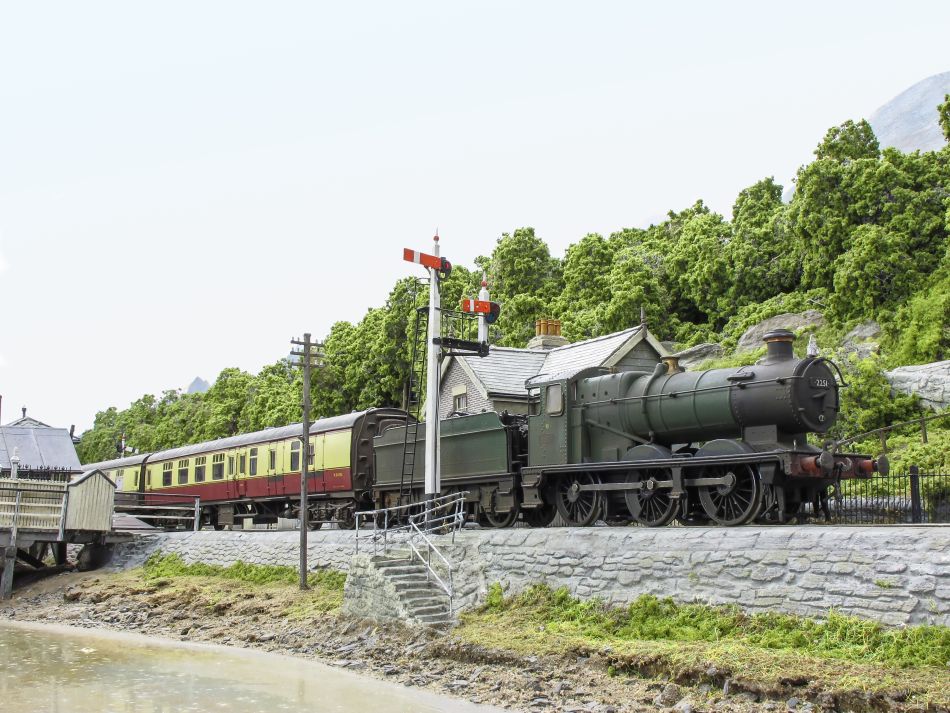
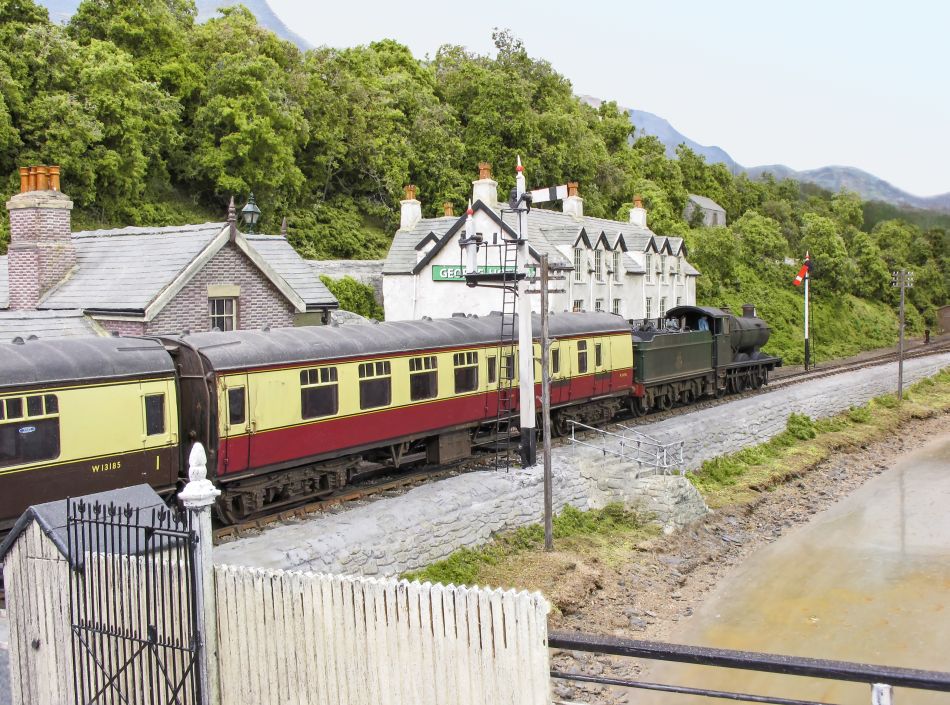
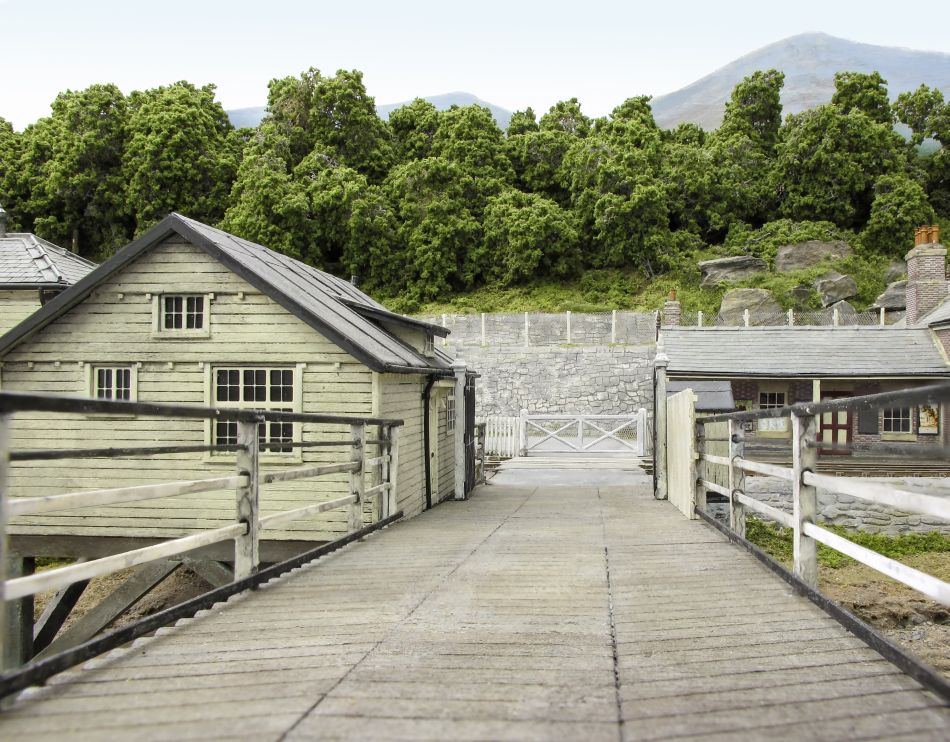
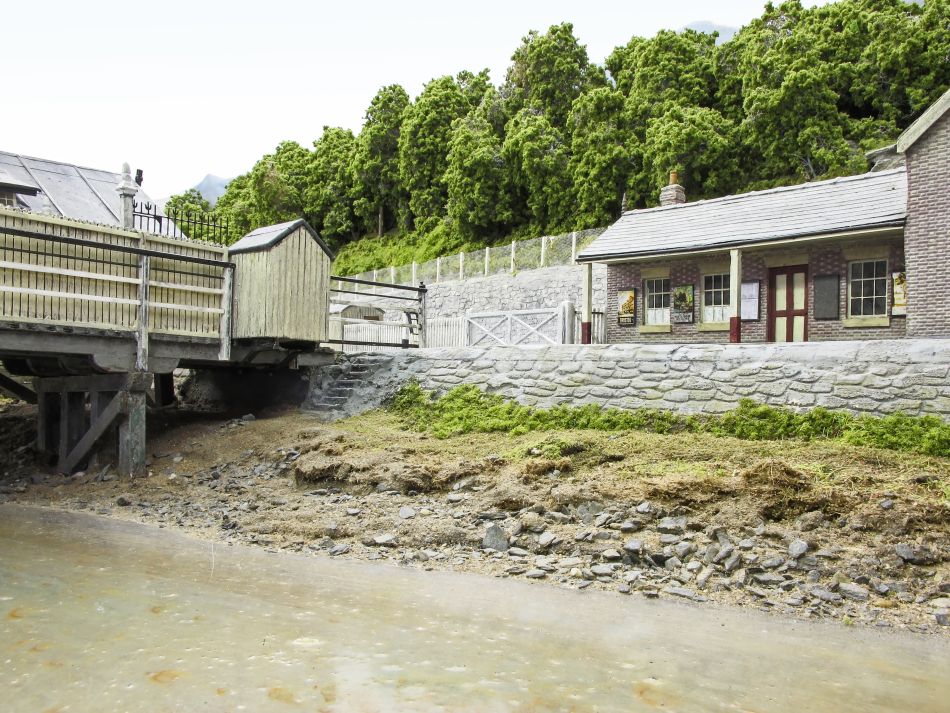
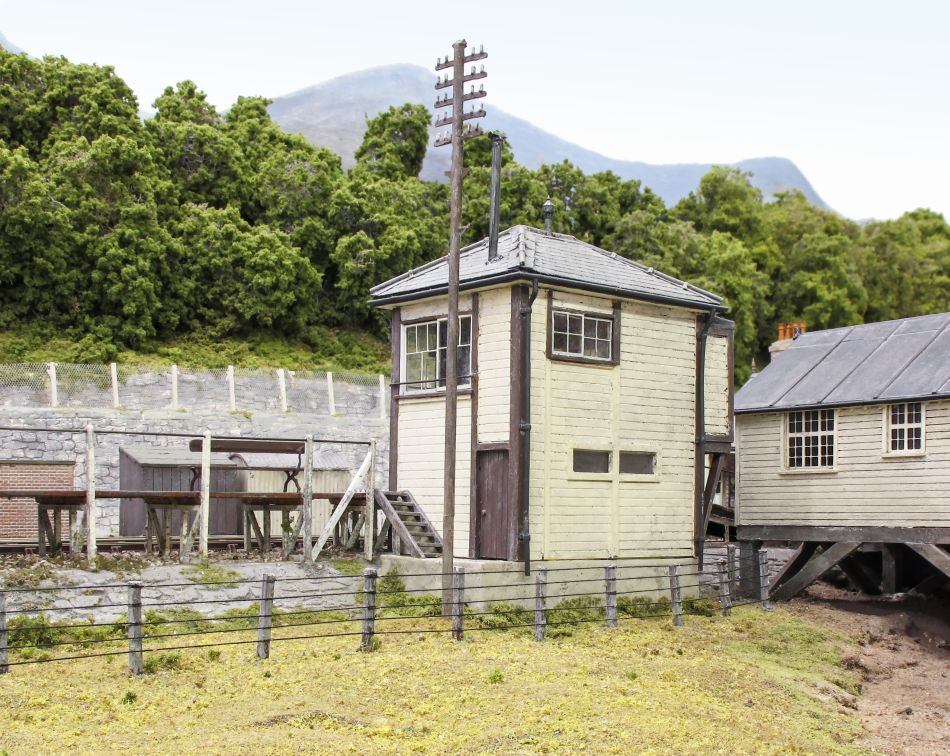
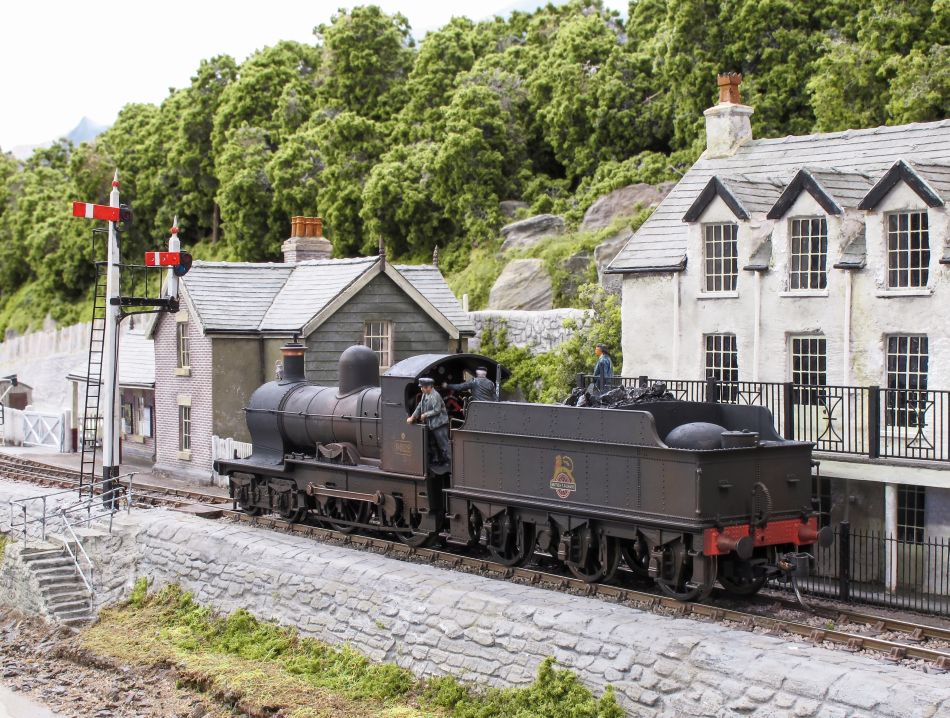
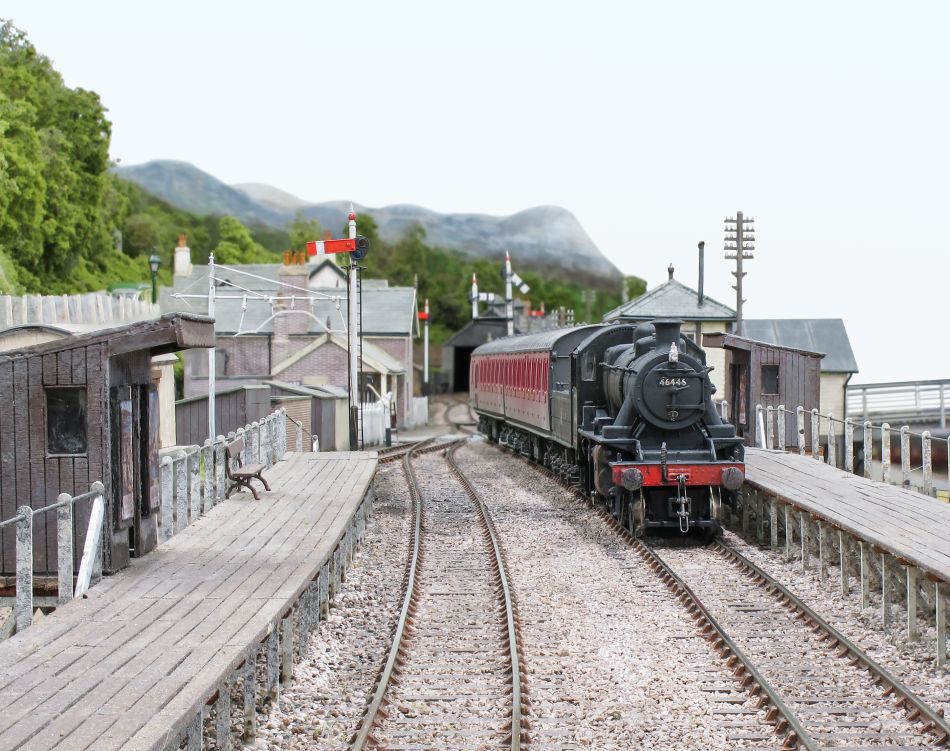
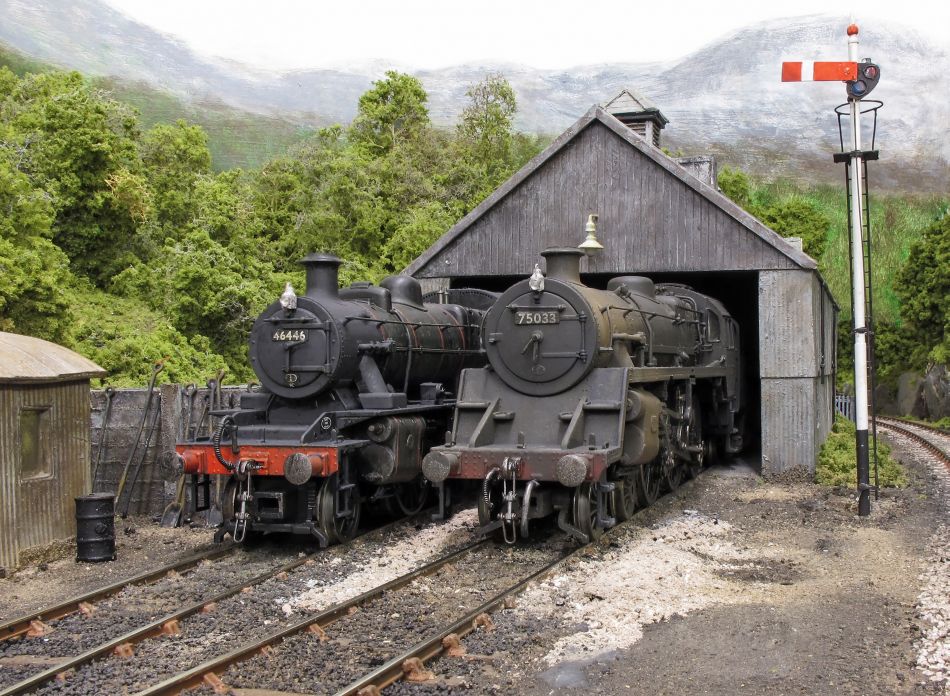
Dolgelley
I would have liked to model both the goods yard and the station at Dolgelley, but due to the usual lack of space, chose to model the goods yard only. The platform ends can just be seen under the bridge, so at least when we are operating, we know when to stop the trains. Again, it is single track until just before the station platforms, which have both up and down tracks. The yard has the same number of sidings as the real one and has a goods shed and cattle dock, as well as the oil terminal track.
This is quite a nice scenic section, with the river running right along the front of the scene. The railway sits on a particularly low embankment, closely following the river, which gives a good reflection of the trains in the water. The largest building here is the oil terminal, which occupies one end of the section. I've tried to make the models as close as possible to the real ones and they are all in the right place. Dolgelley yard is fifteen feet long with a backscene that was painted by a local artist. The other structures here are the goods shed, low relief cottages, bridge over the railway and river, a rather old wooden warehouse and the water tank.
Trackwork is SMP plain track with hand-built points.
Dolgelley goods yard was featured in November 2017 issue of British Railway Magazine.
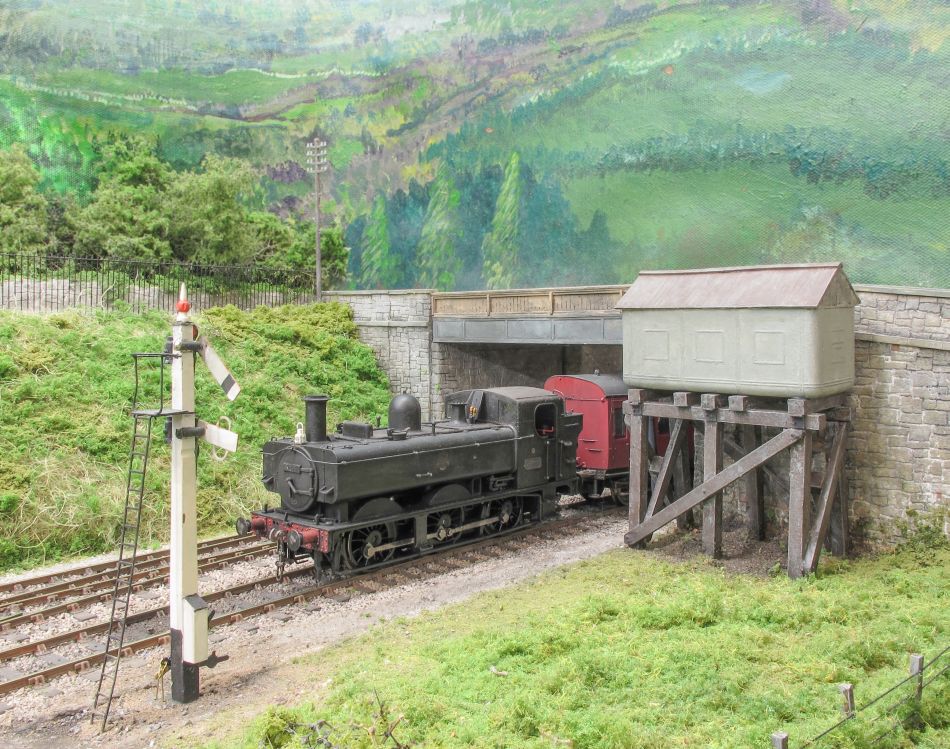
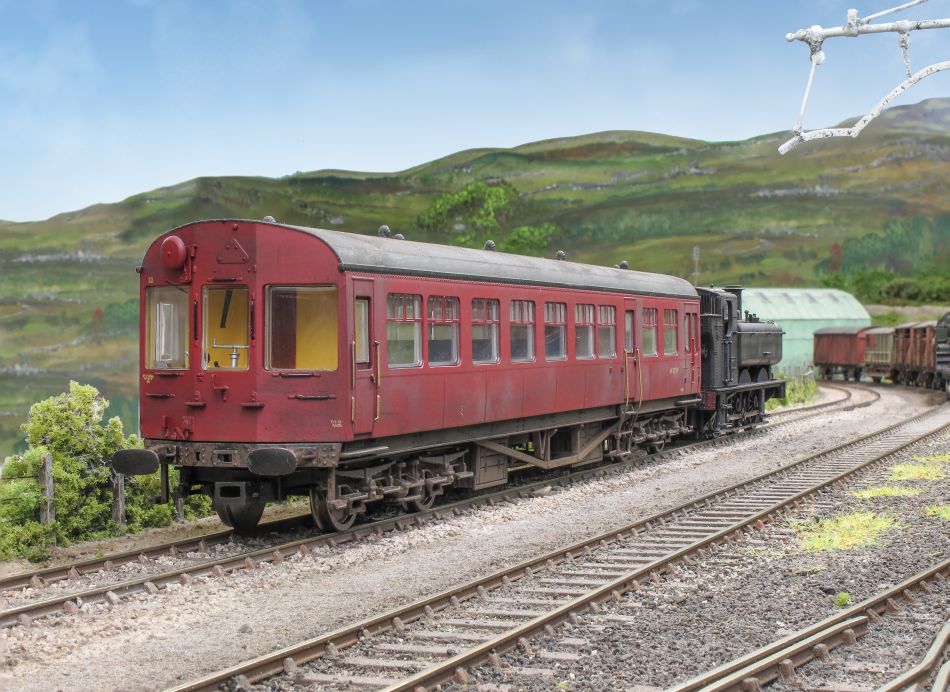
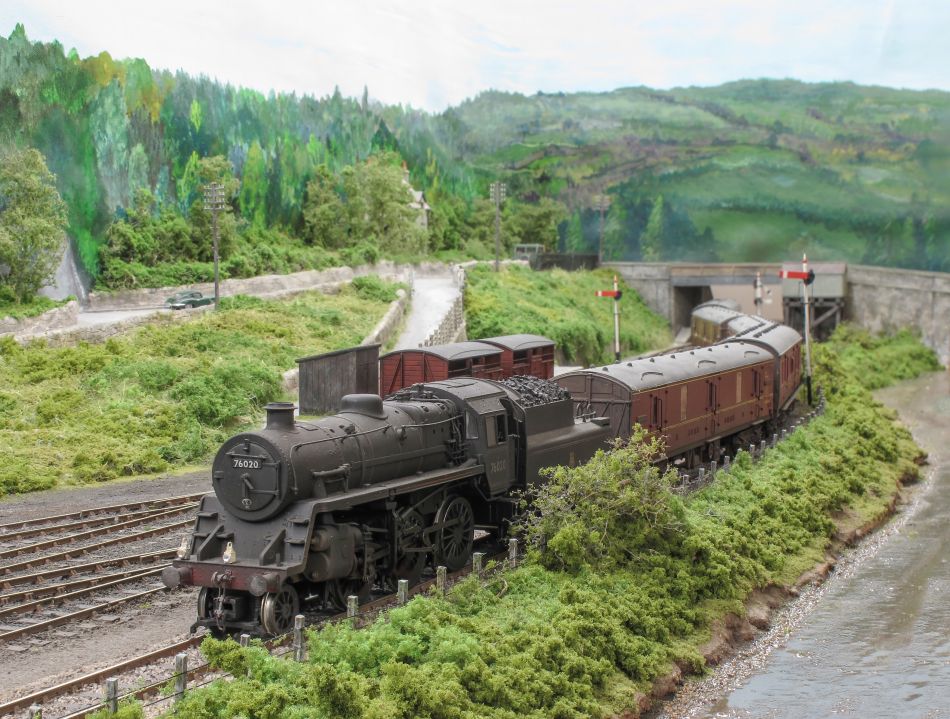
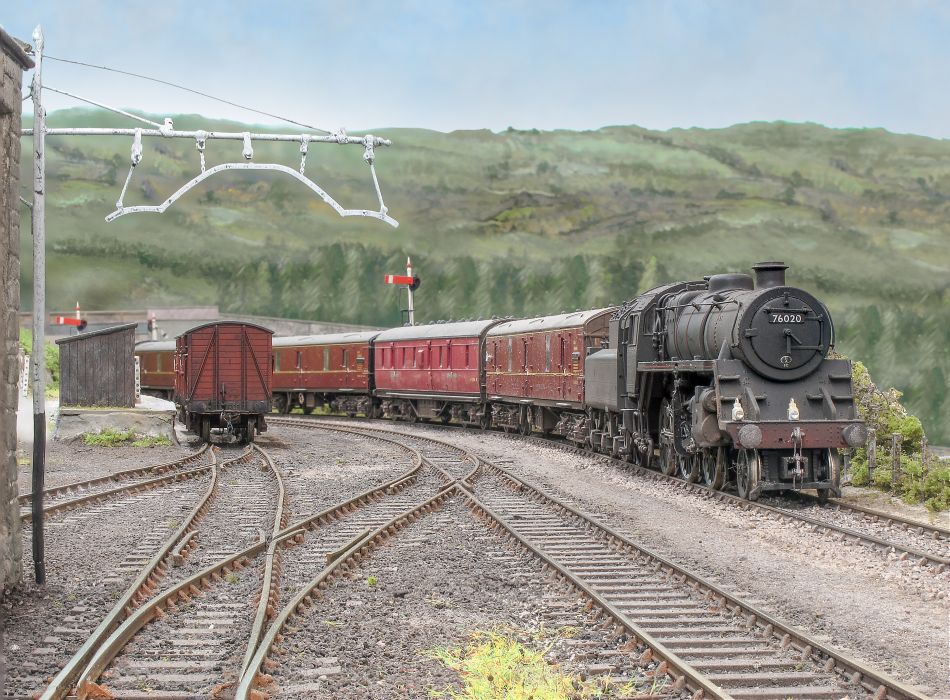
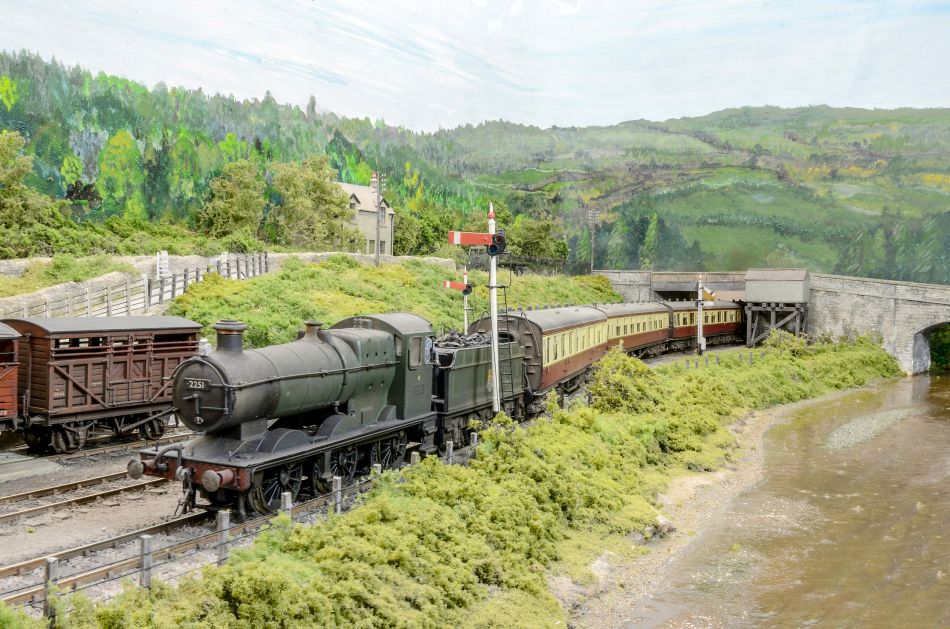
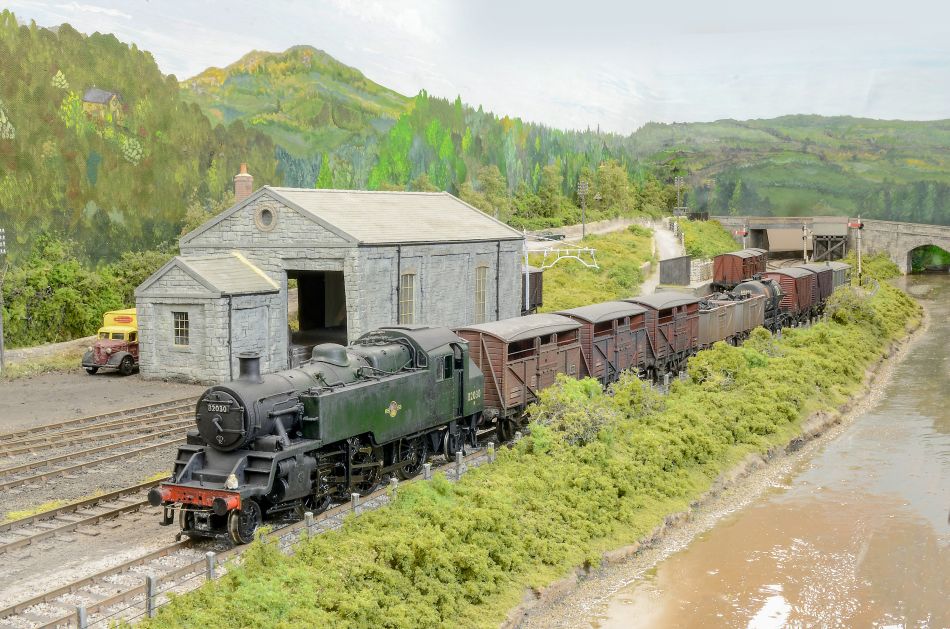
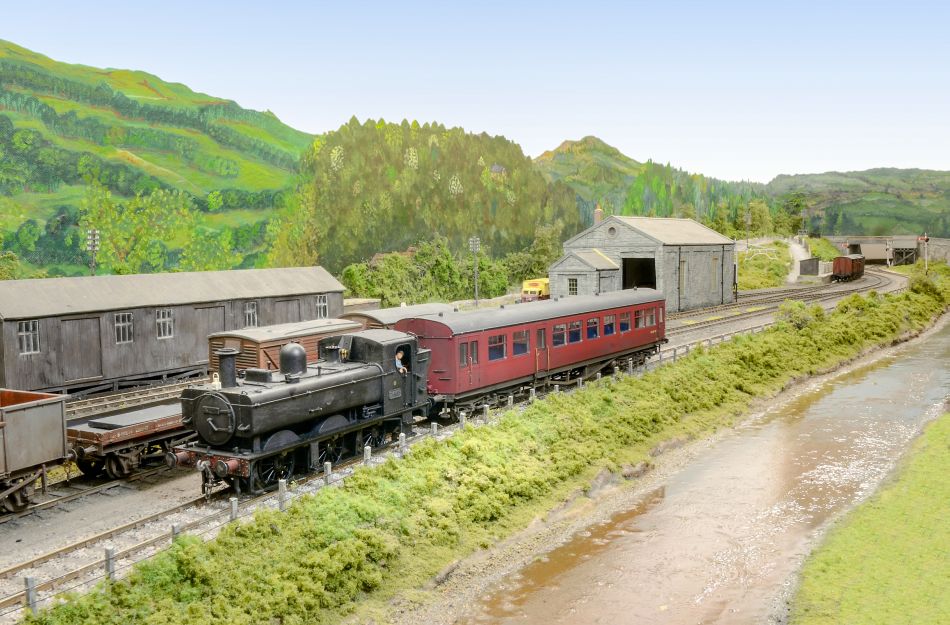
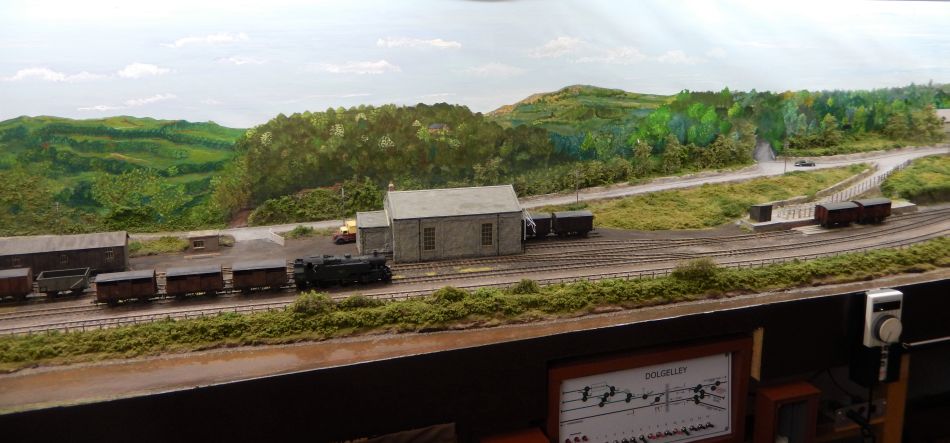
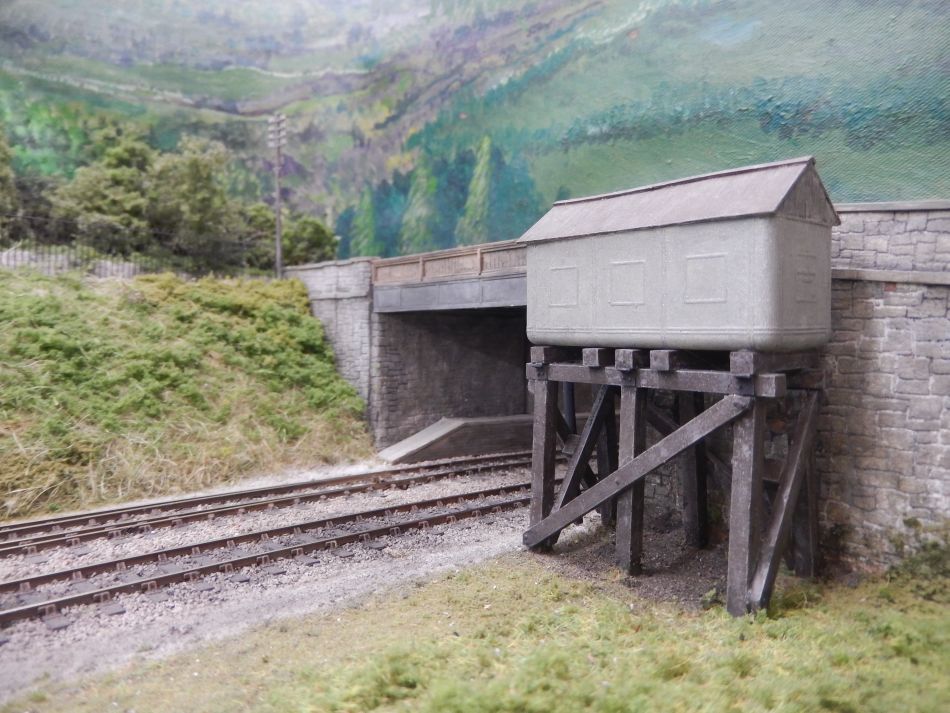
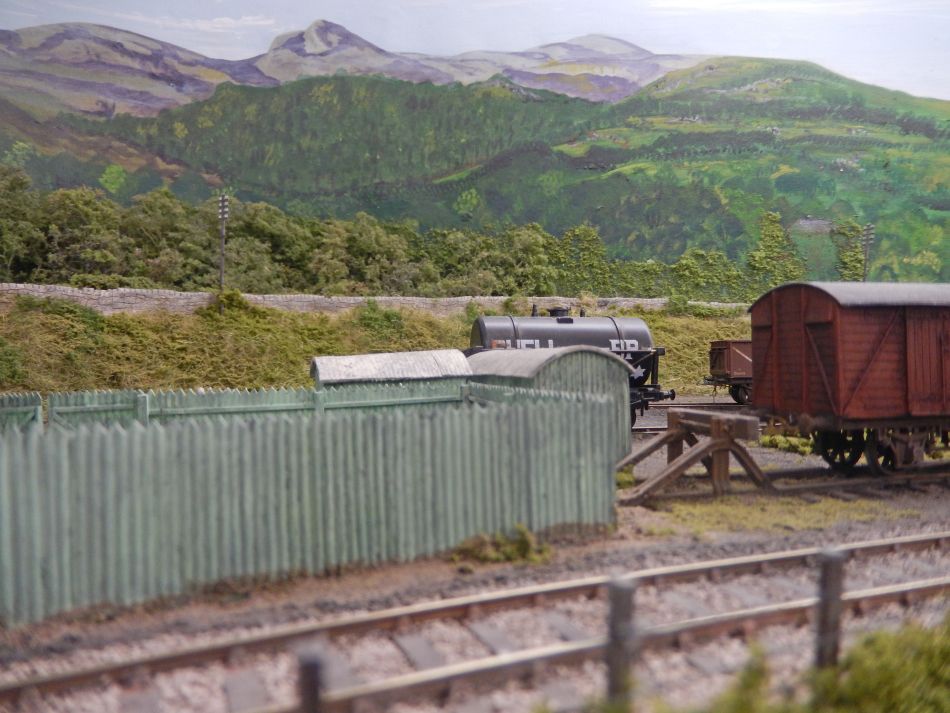
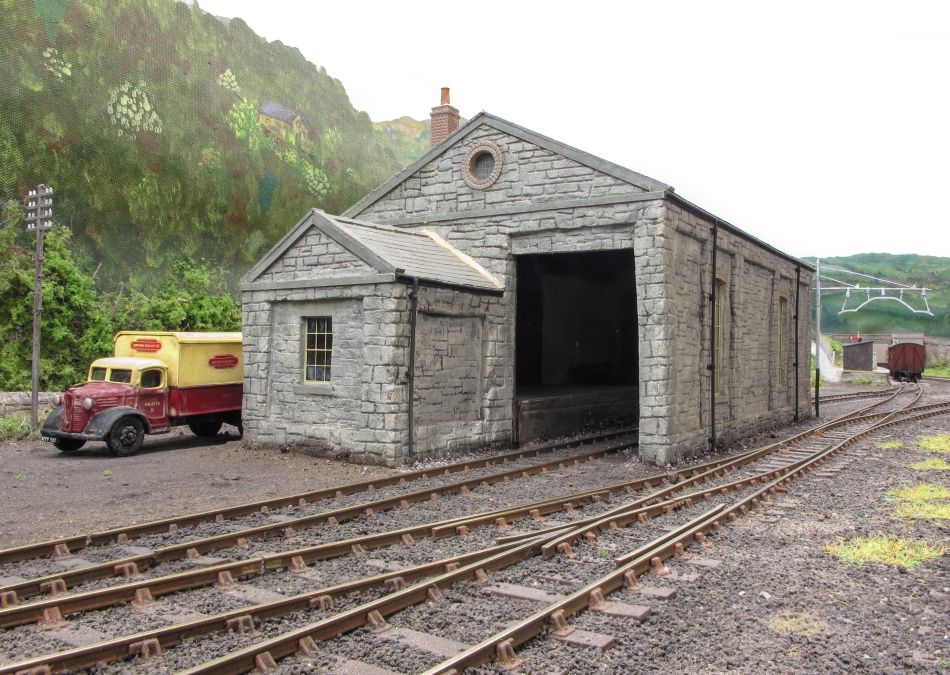

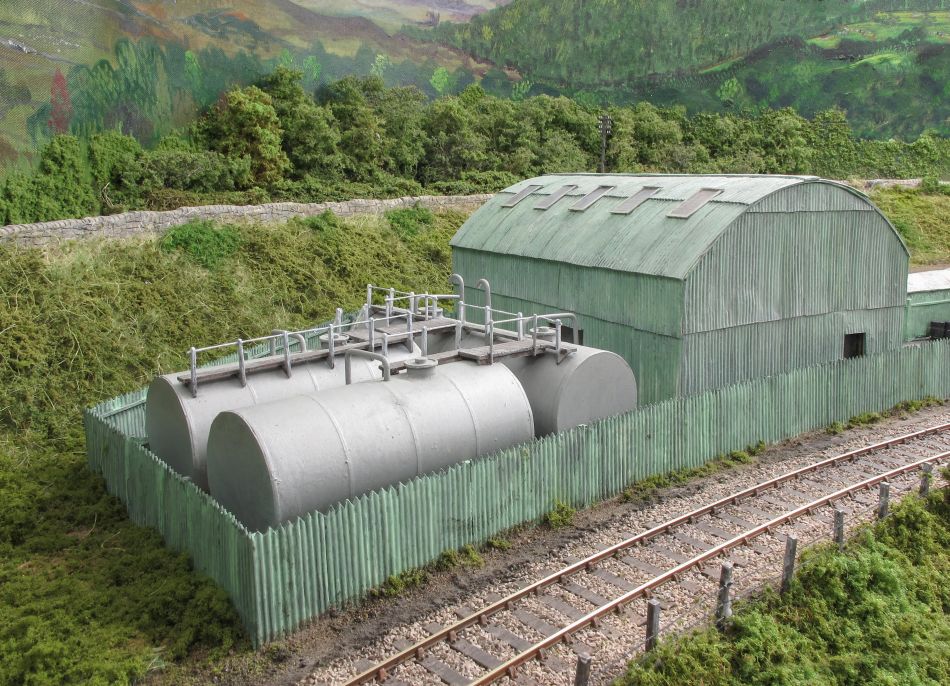
Gwynant Bridge
The river bridge is called Gwynant bridge and a visit was made to measure it up with plenty of pictures being taken to produce the finished model. It was made entirely from plastic strips and angled strips. The slate seen in the above picture was collected from the area around Barmouth bridge and then sorted out into appropriate sizes and glued in place. The river is made up of layers of varnish over a painted and a glueing of various stones, shale and sand. The rock formation was made from polystyrene shapes glued to the baseboard with a very thick covering of building plaster over the top. It was left to dry for a few weeks and then carved into the rock cutting, using various tools. Trees were made from 'Forest in a box', sprayed with browns and greys and then Woodlands scenics was glued to the branches.
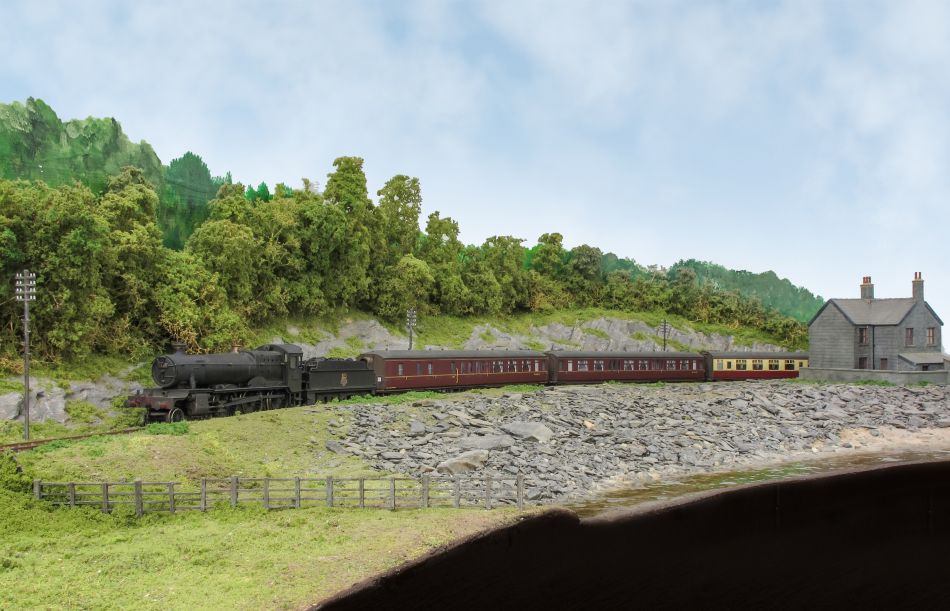
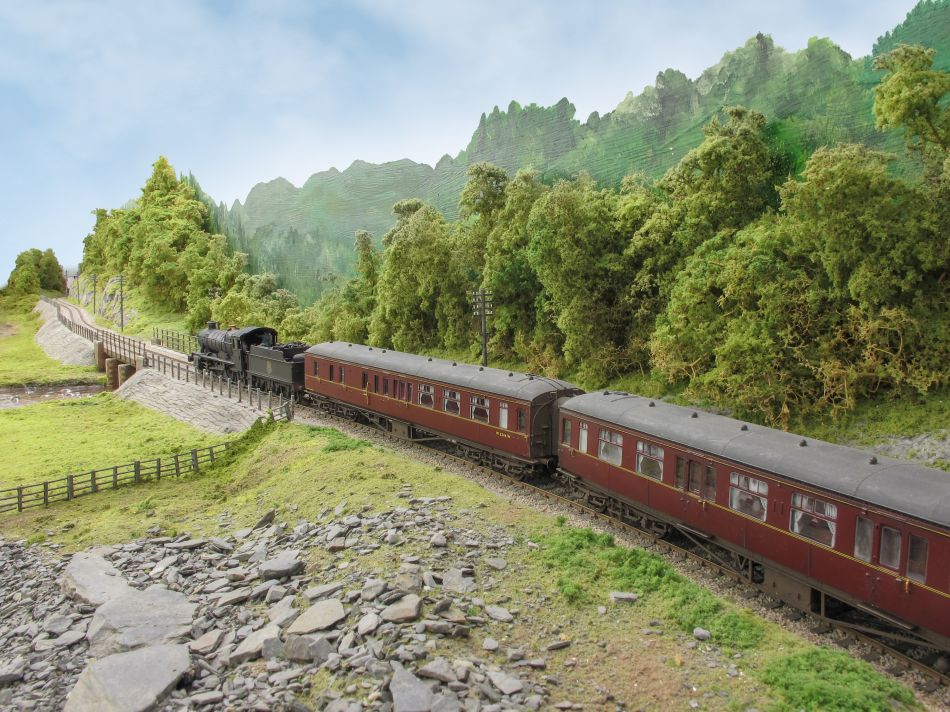
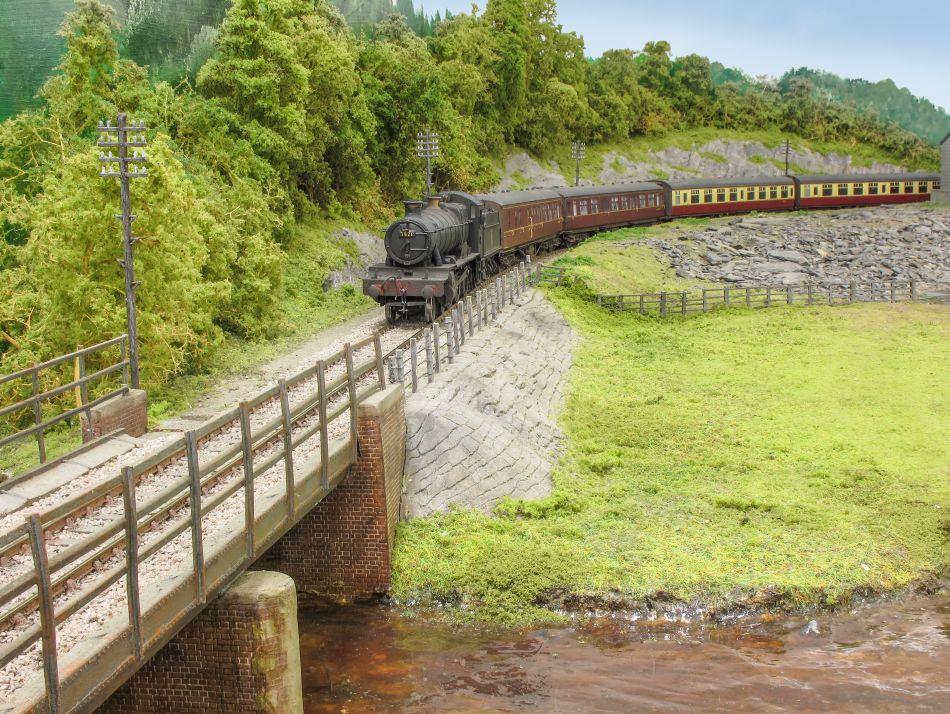
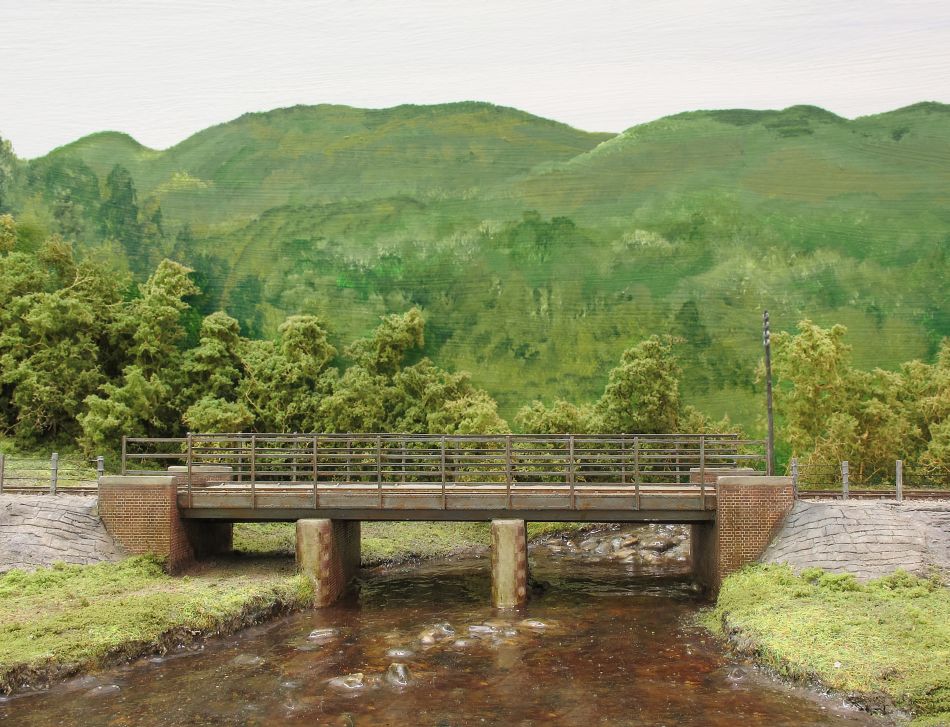
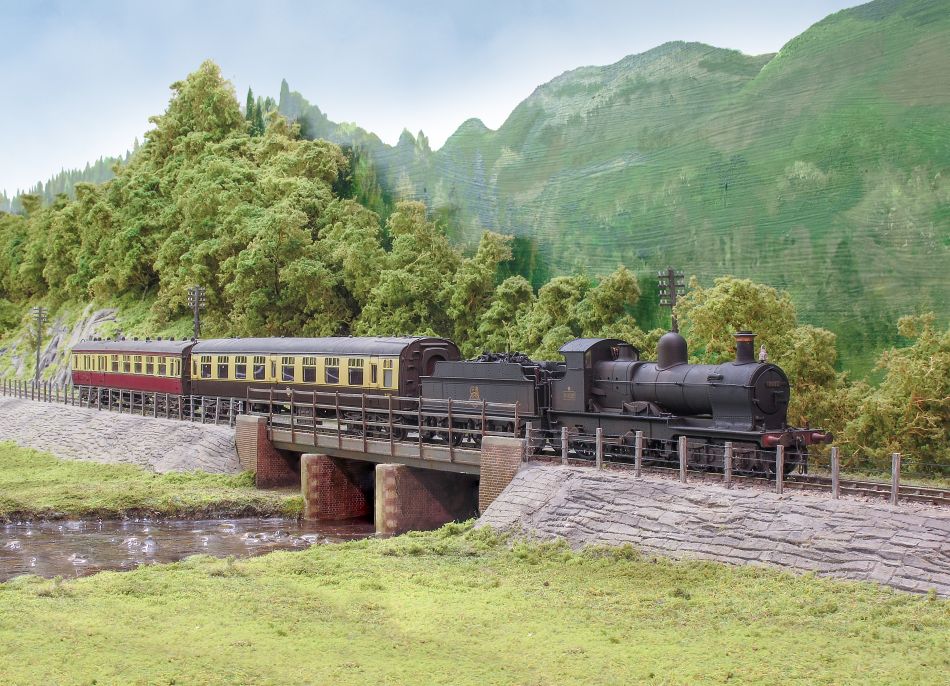
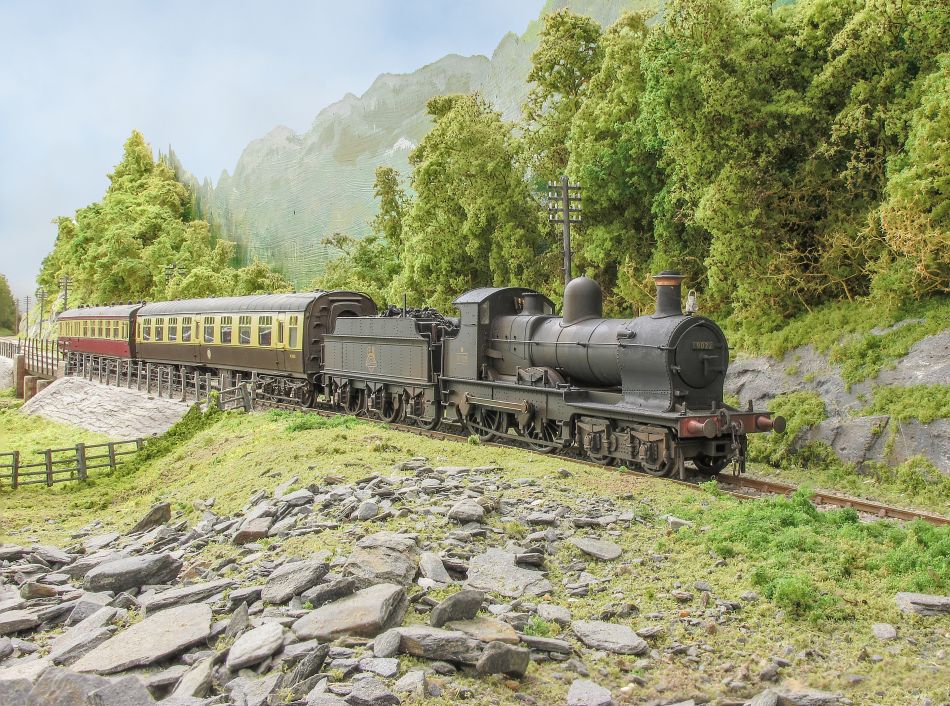
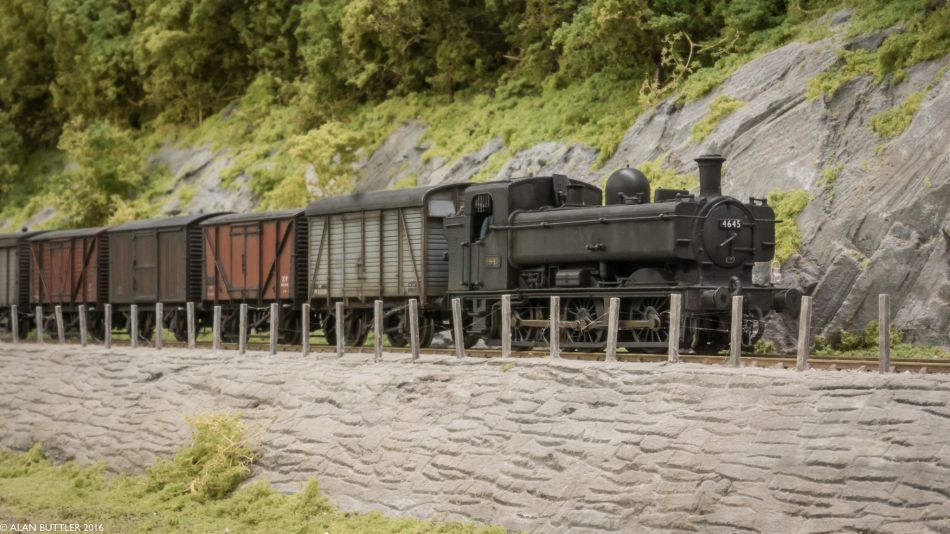
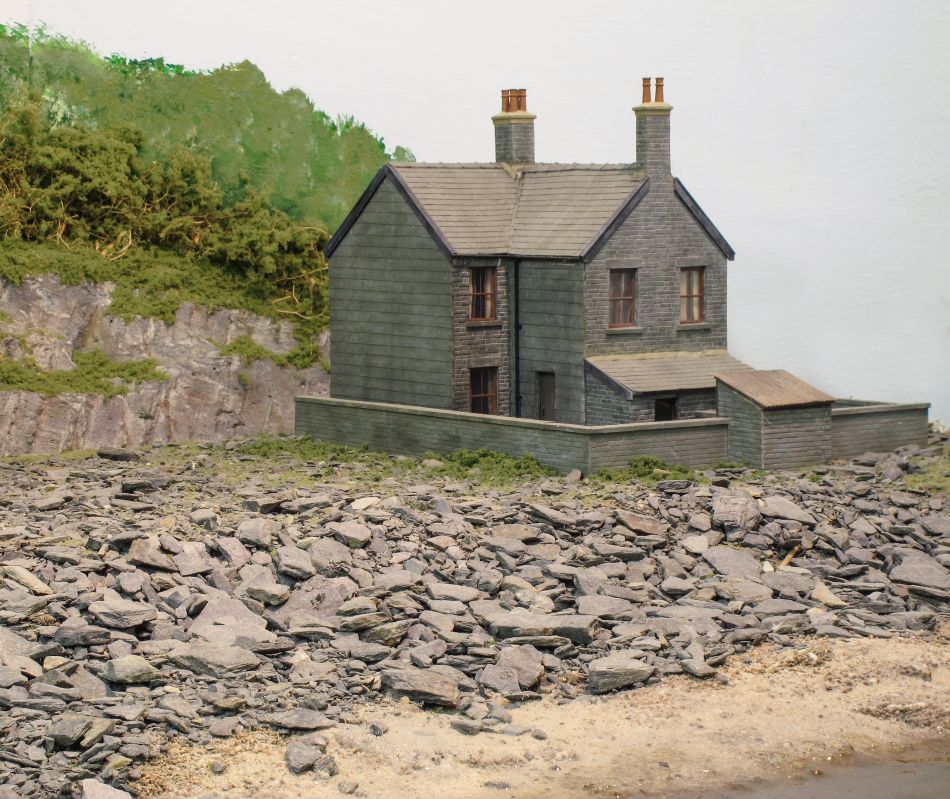
© Geoff Taylor, Andy York, Mike Wild and Alan Buttler
| Section Page | Previous Page | Next Page |
